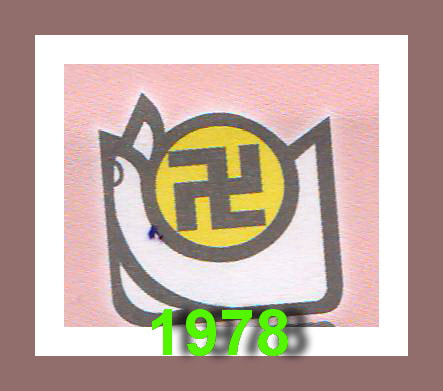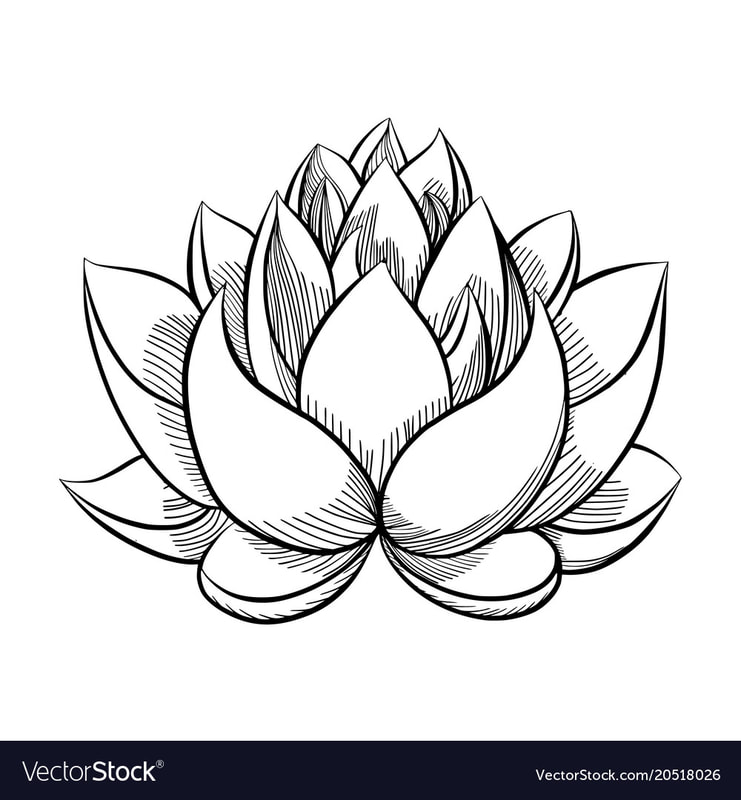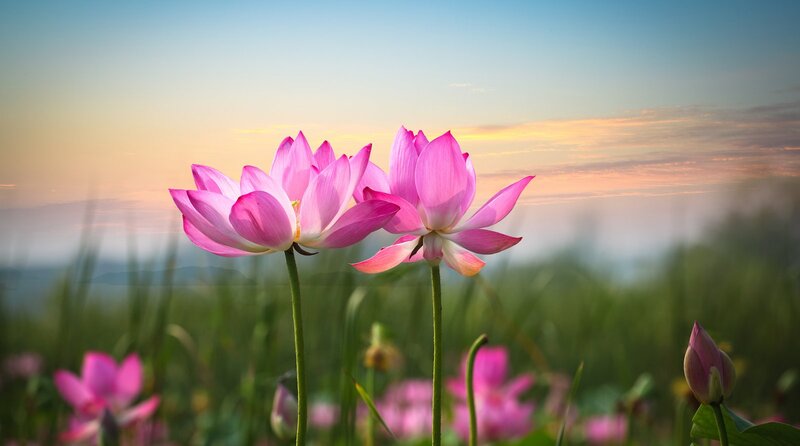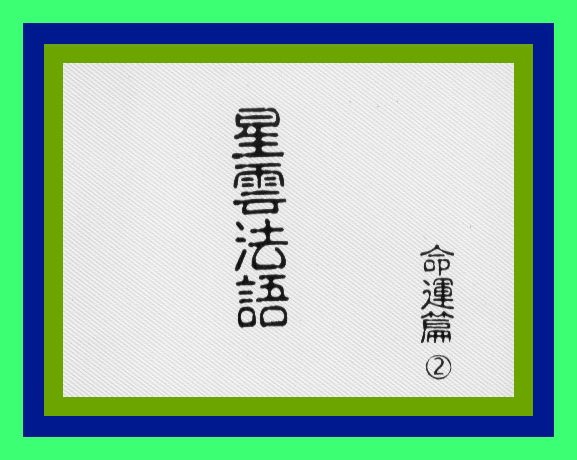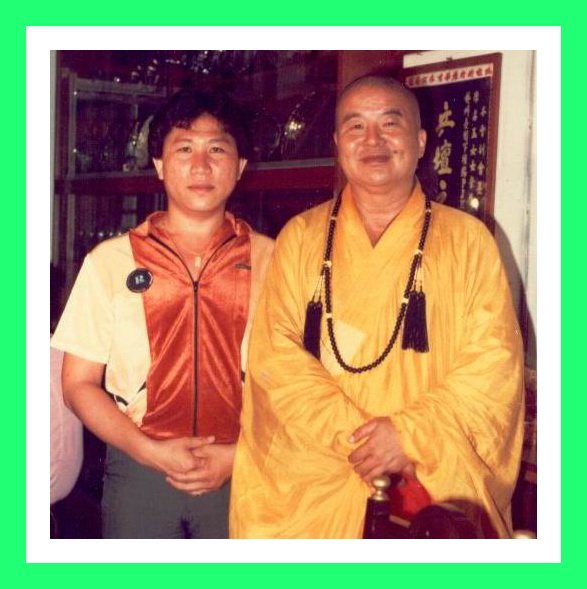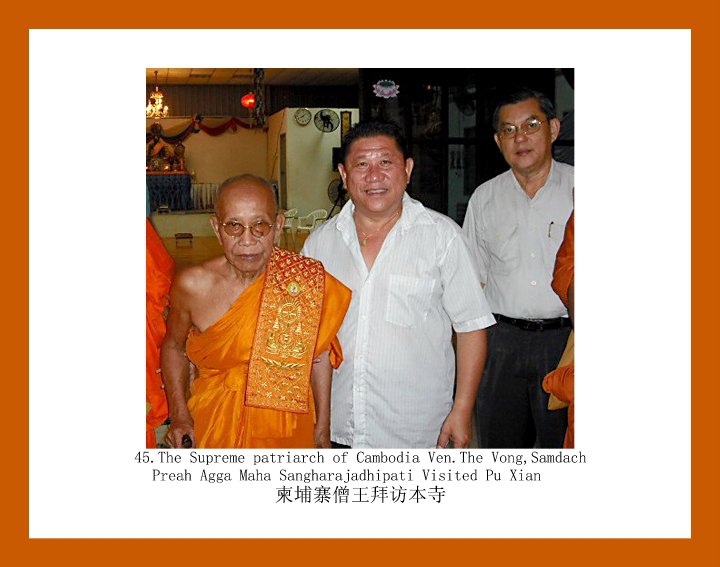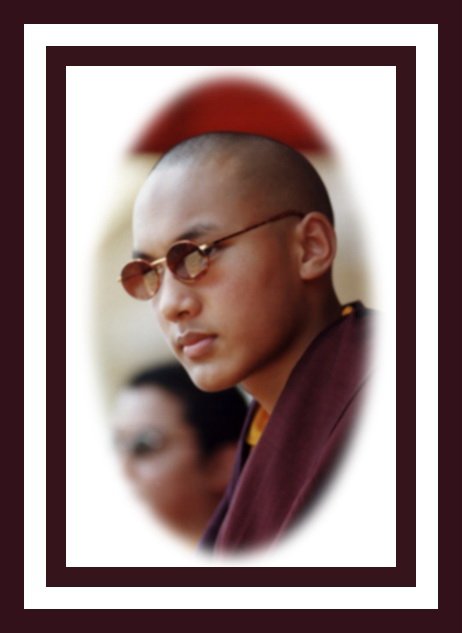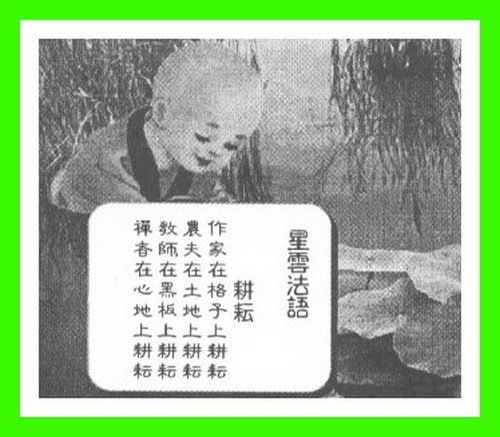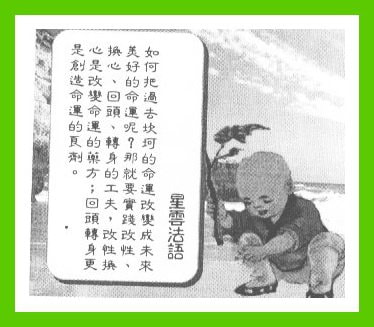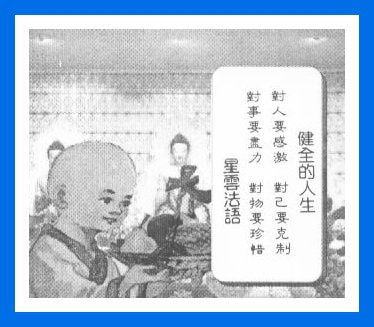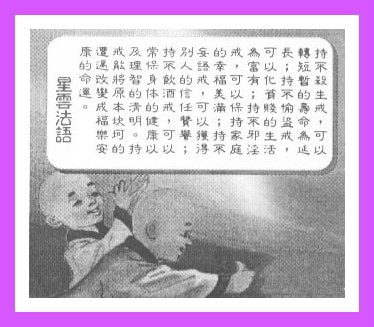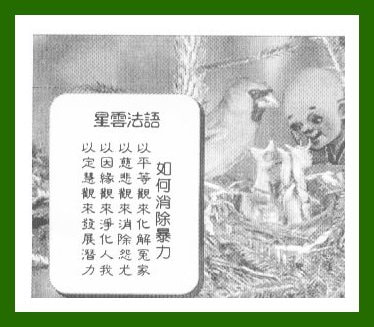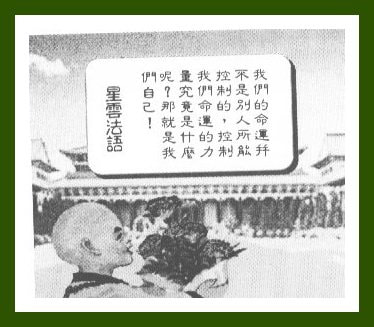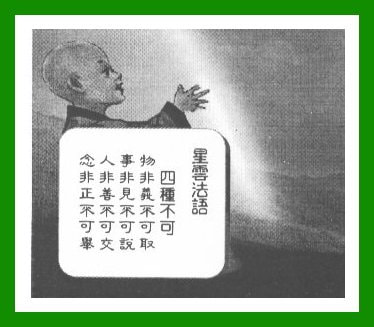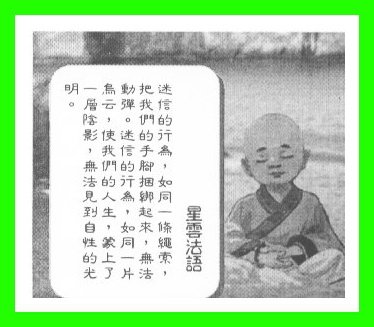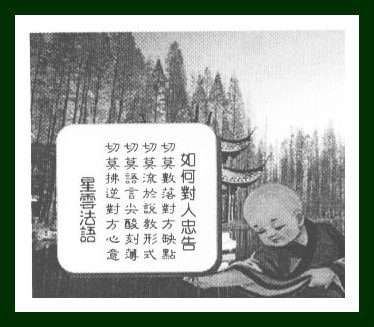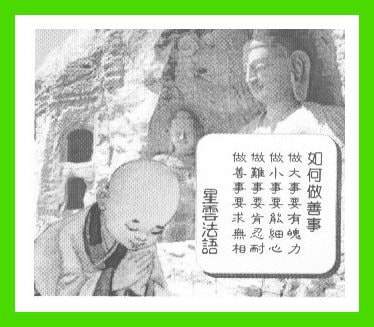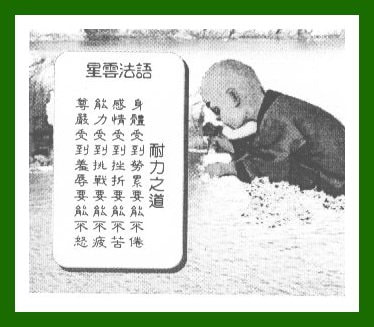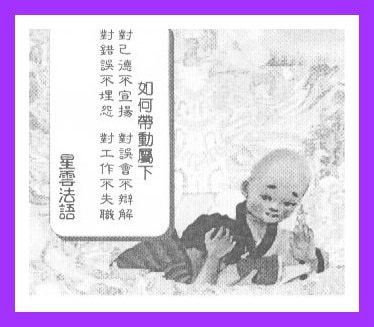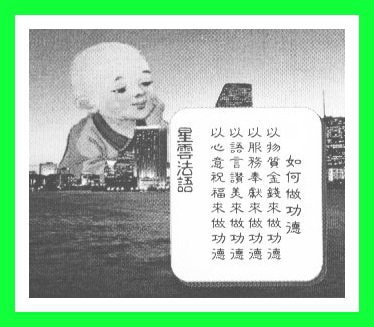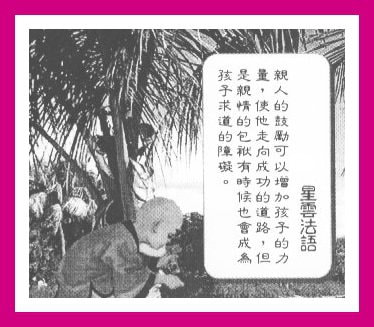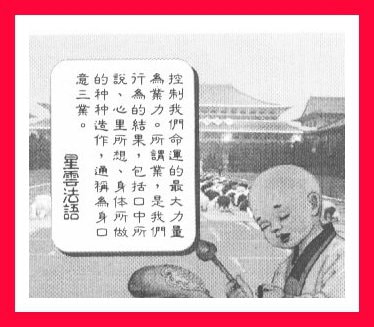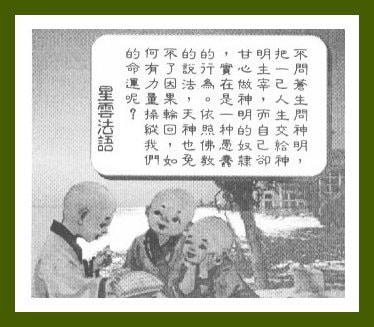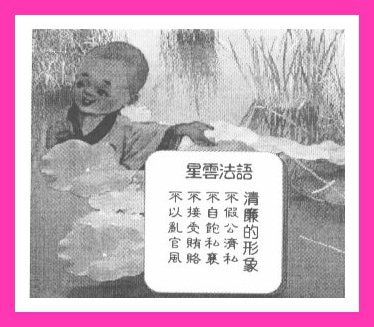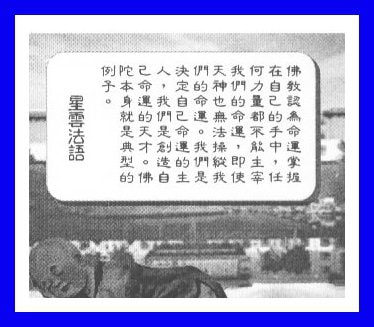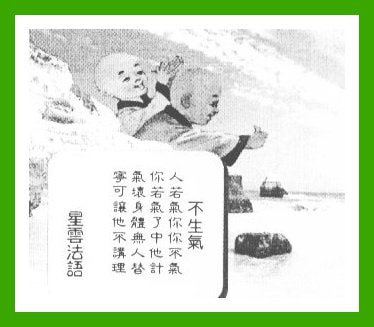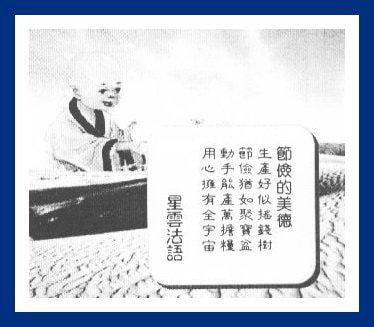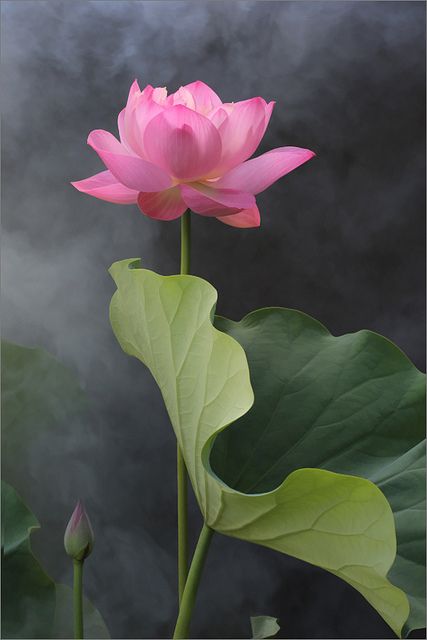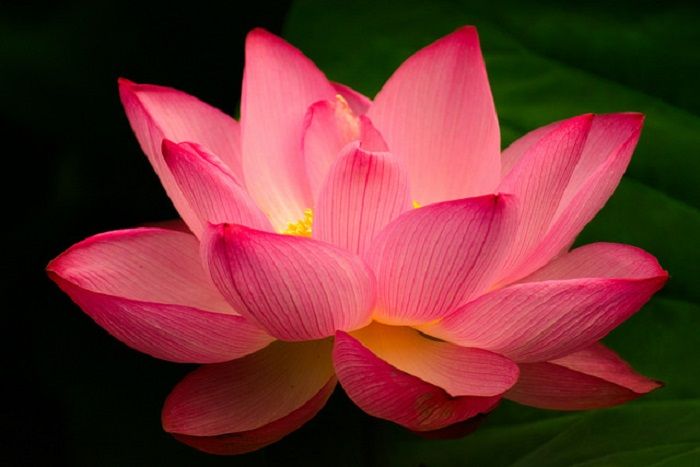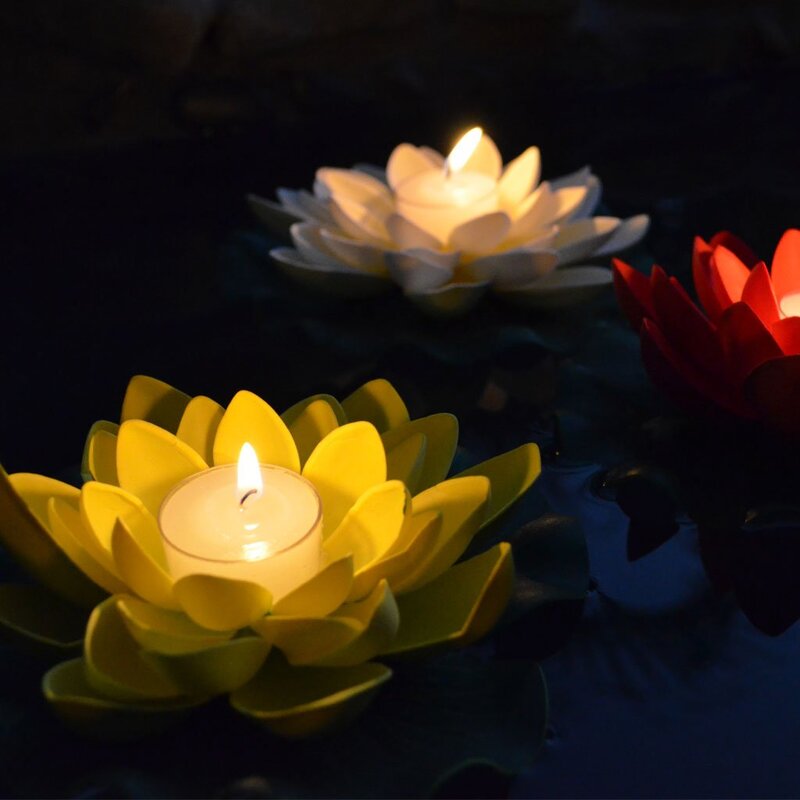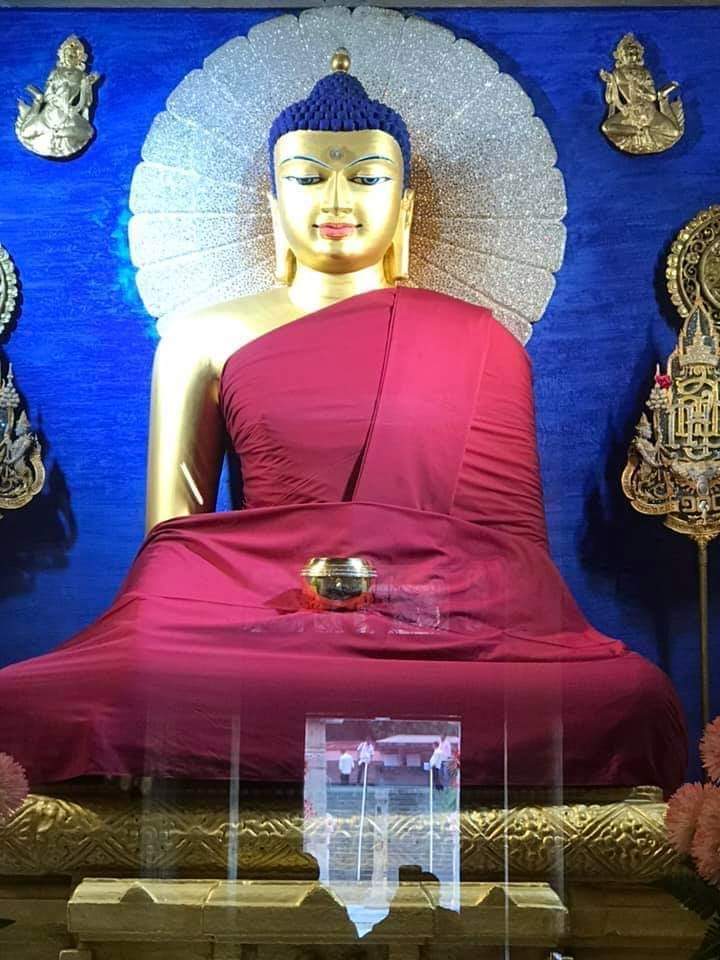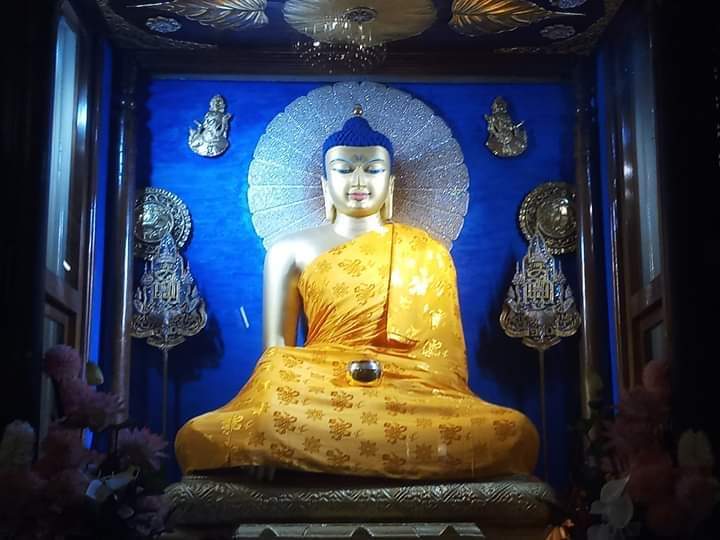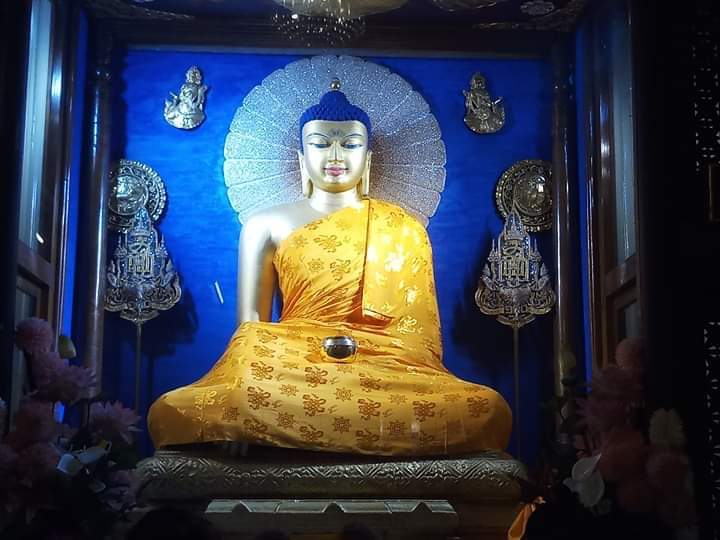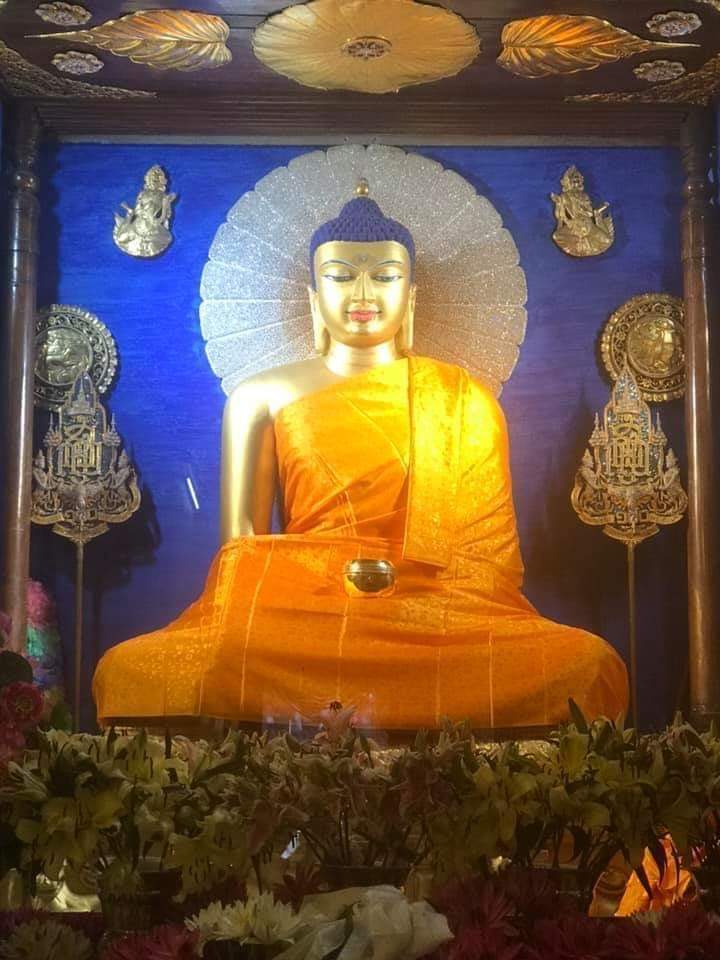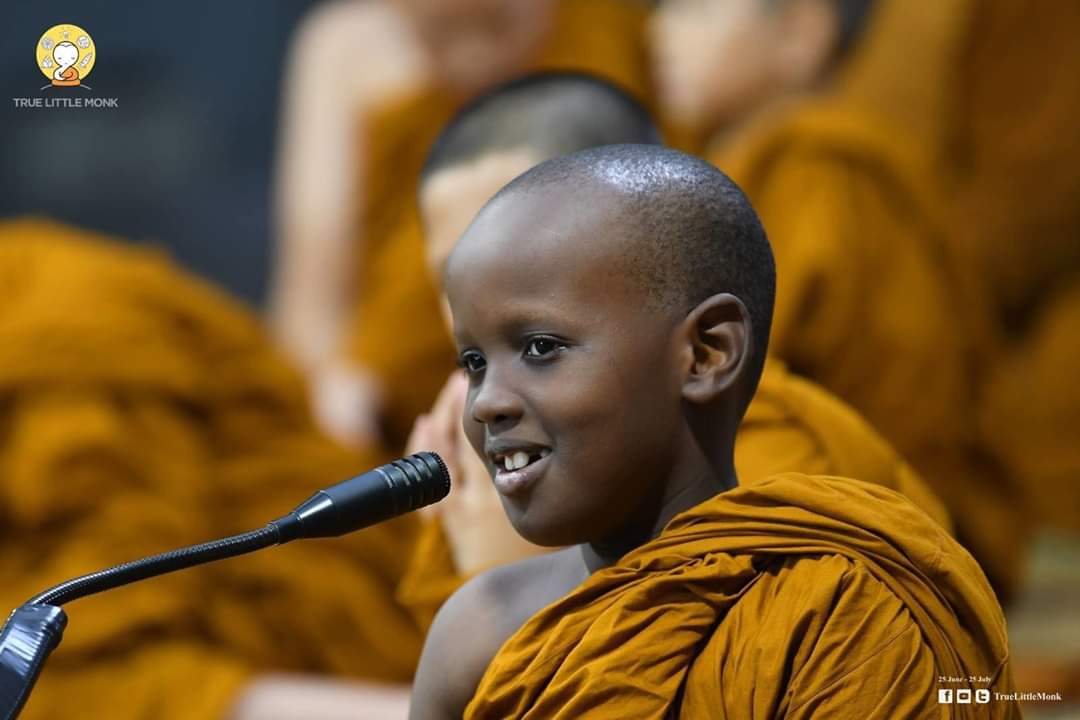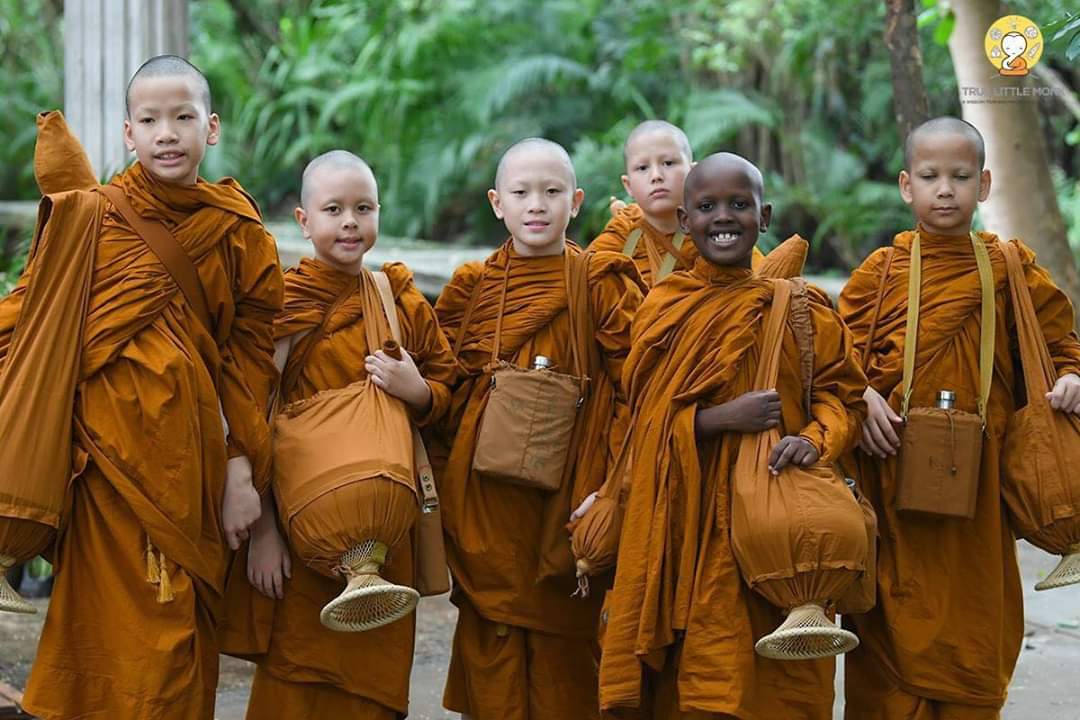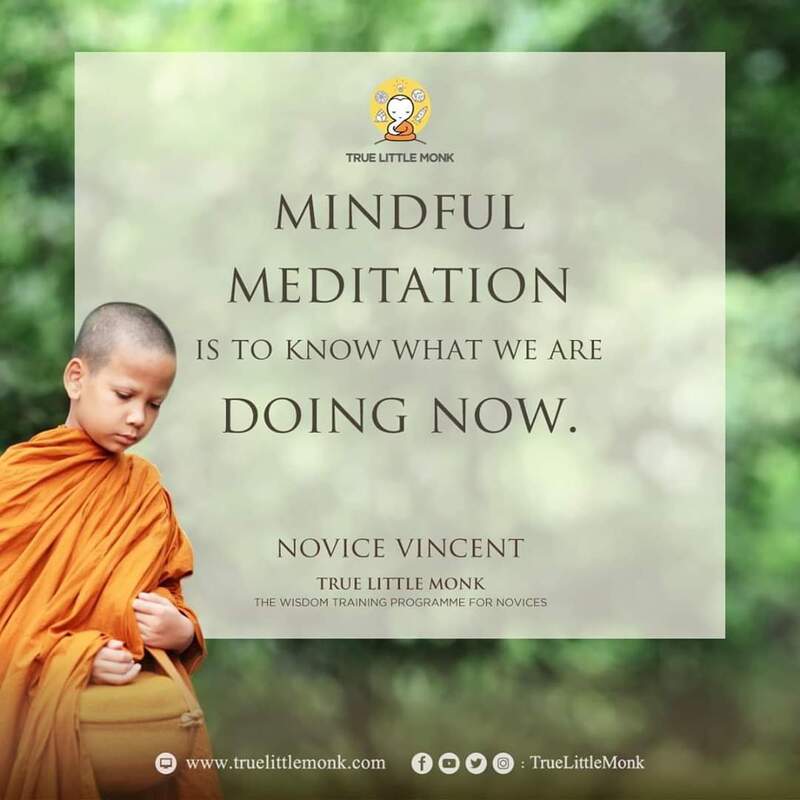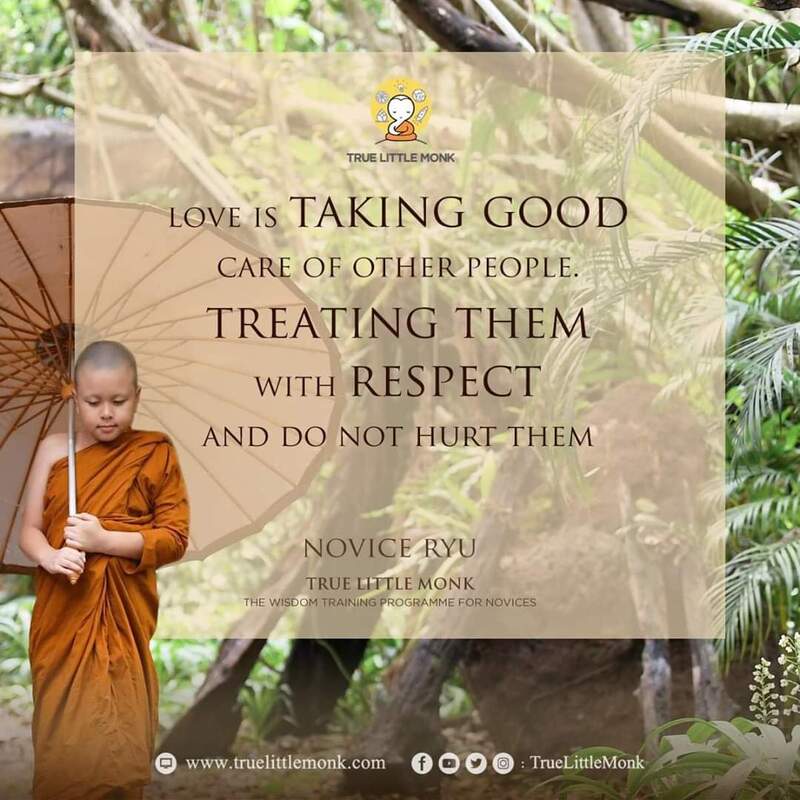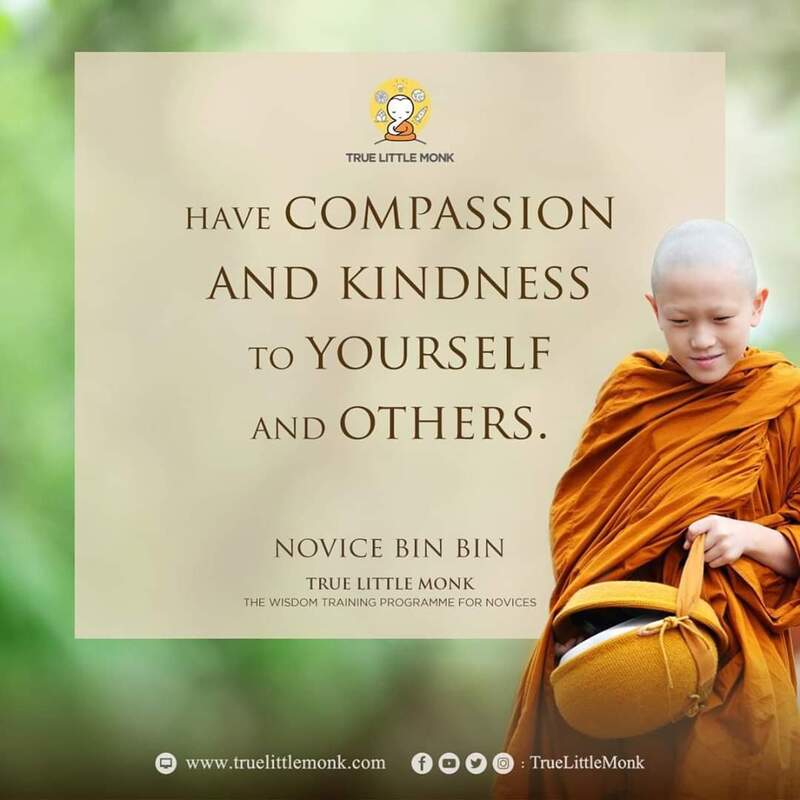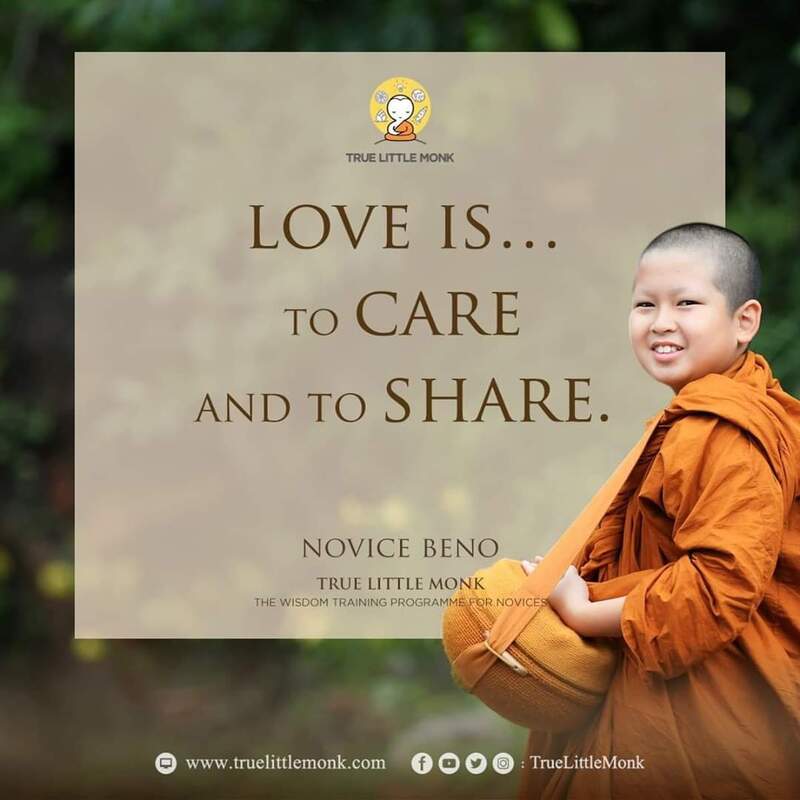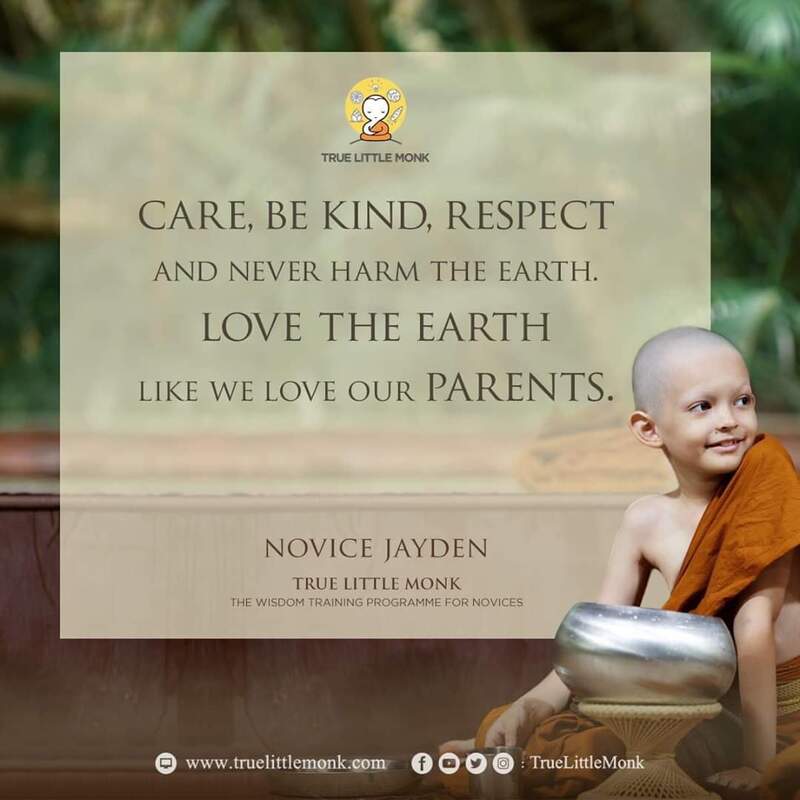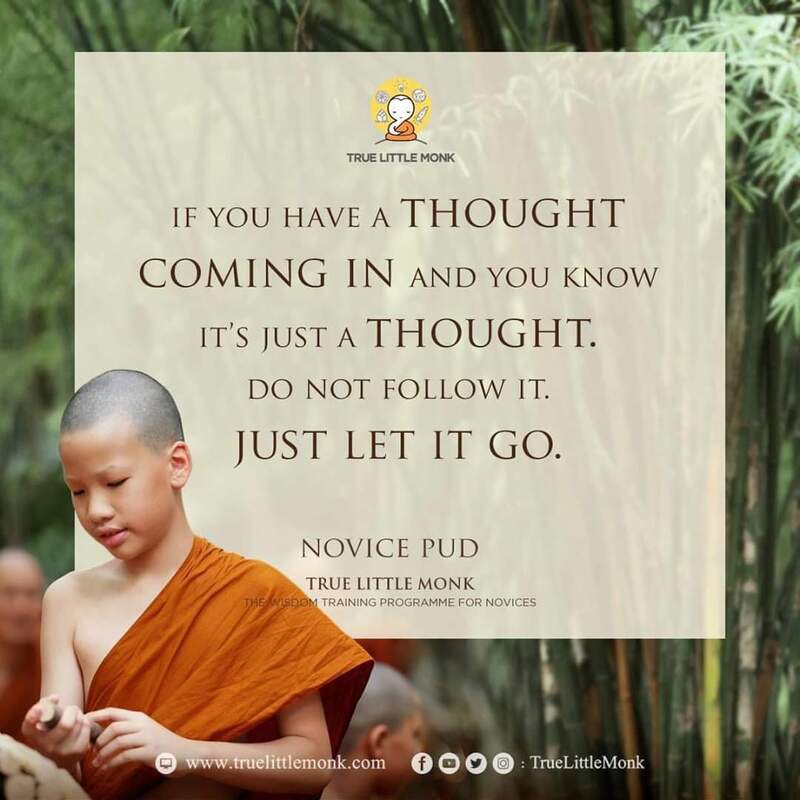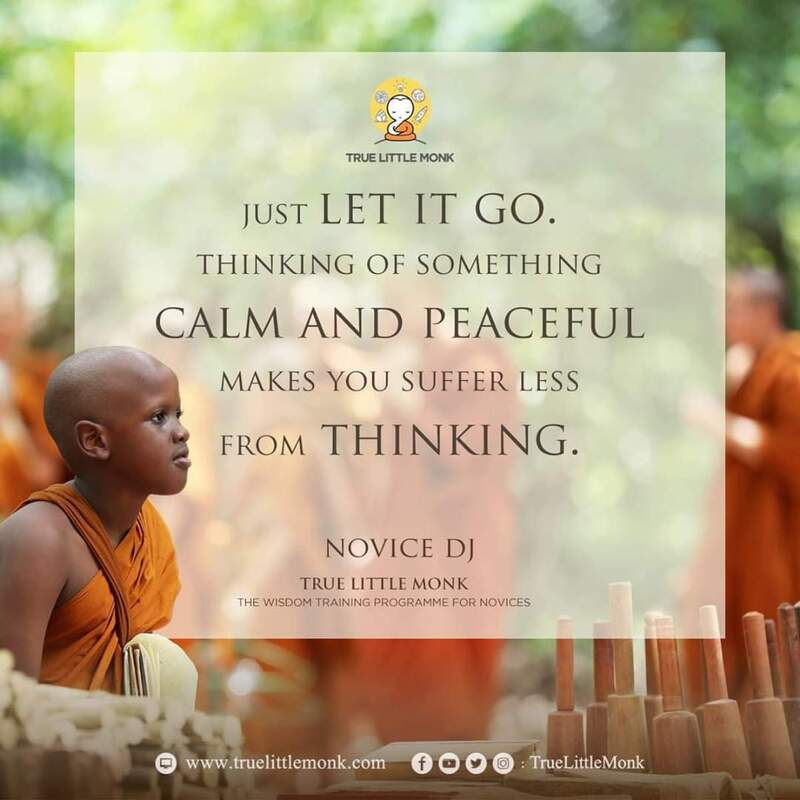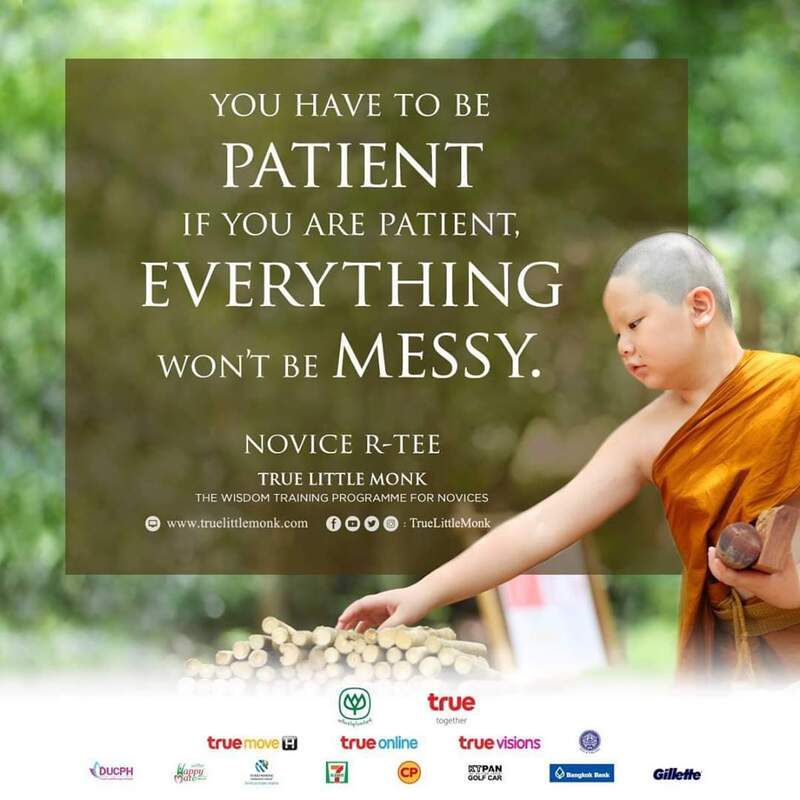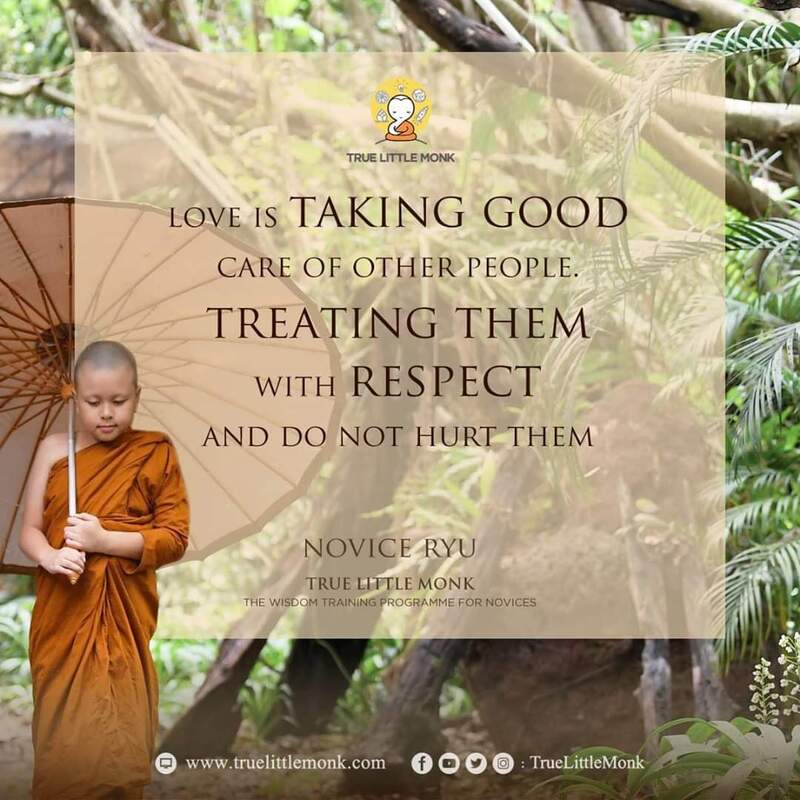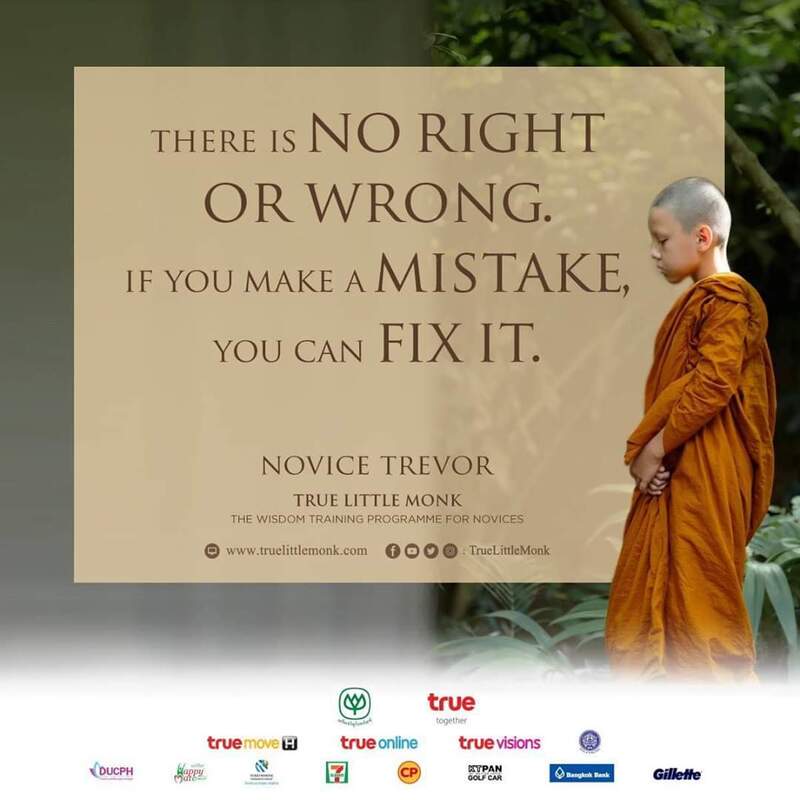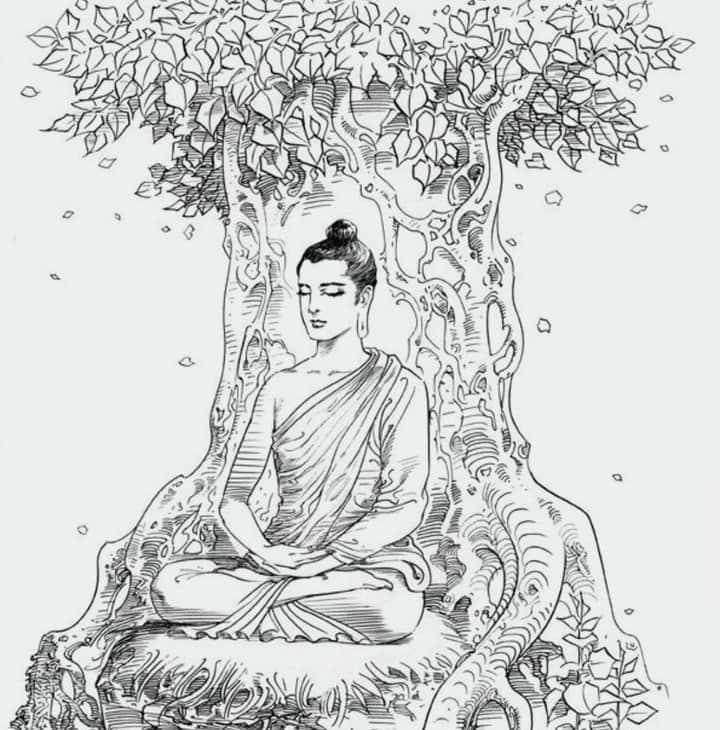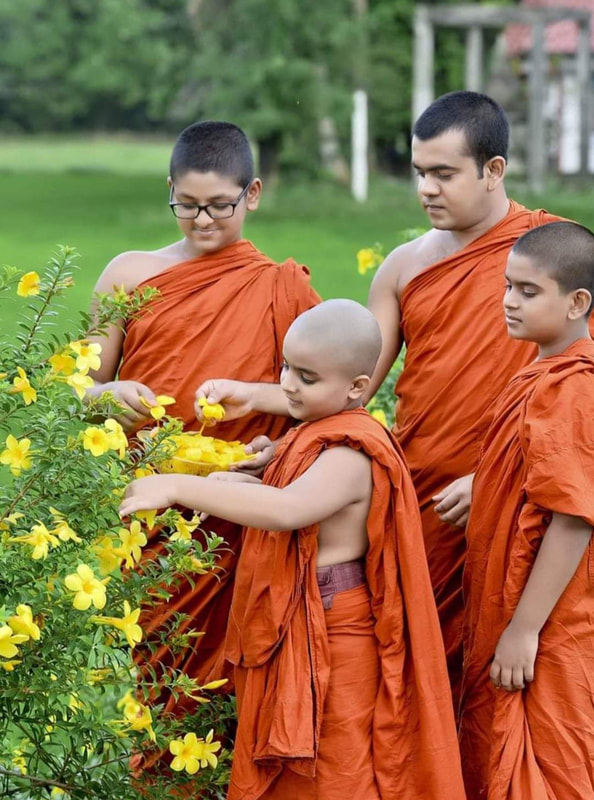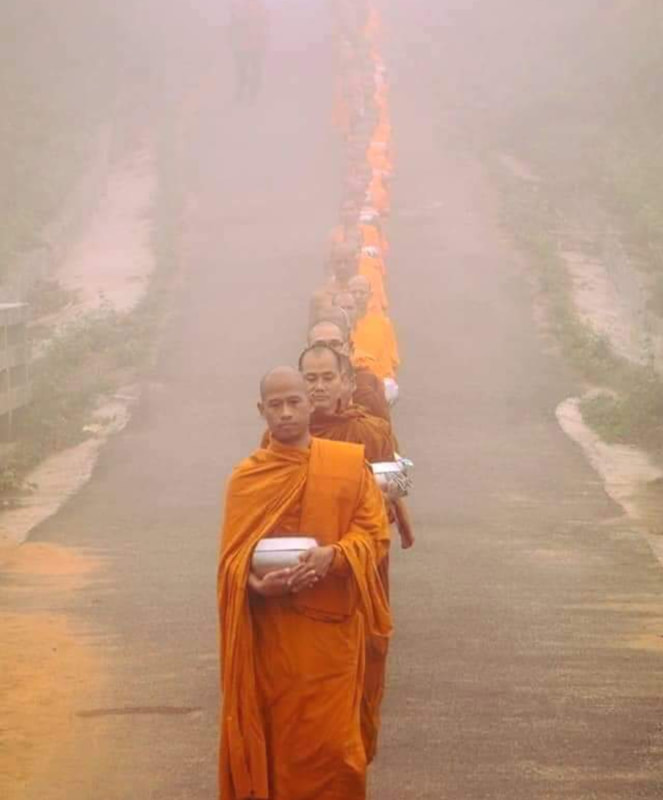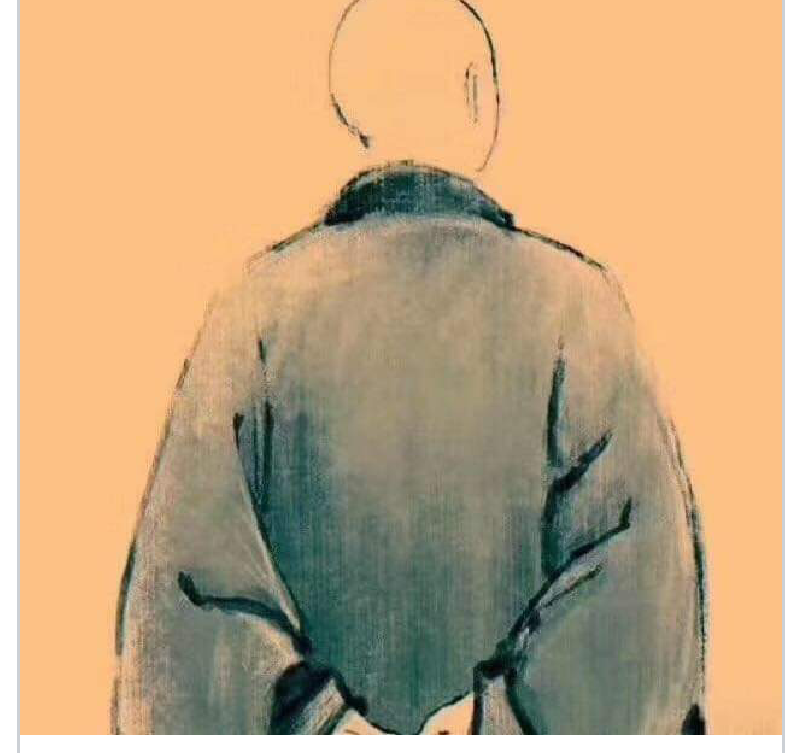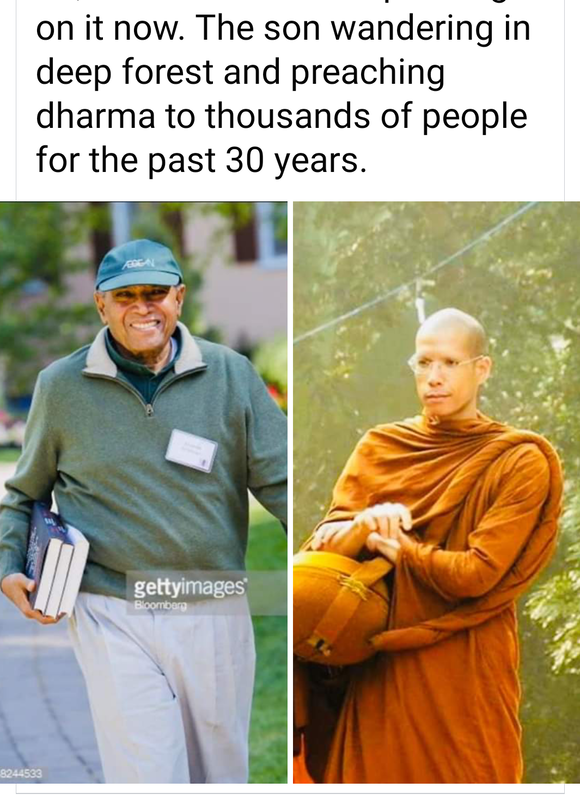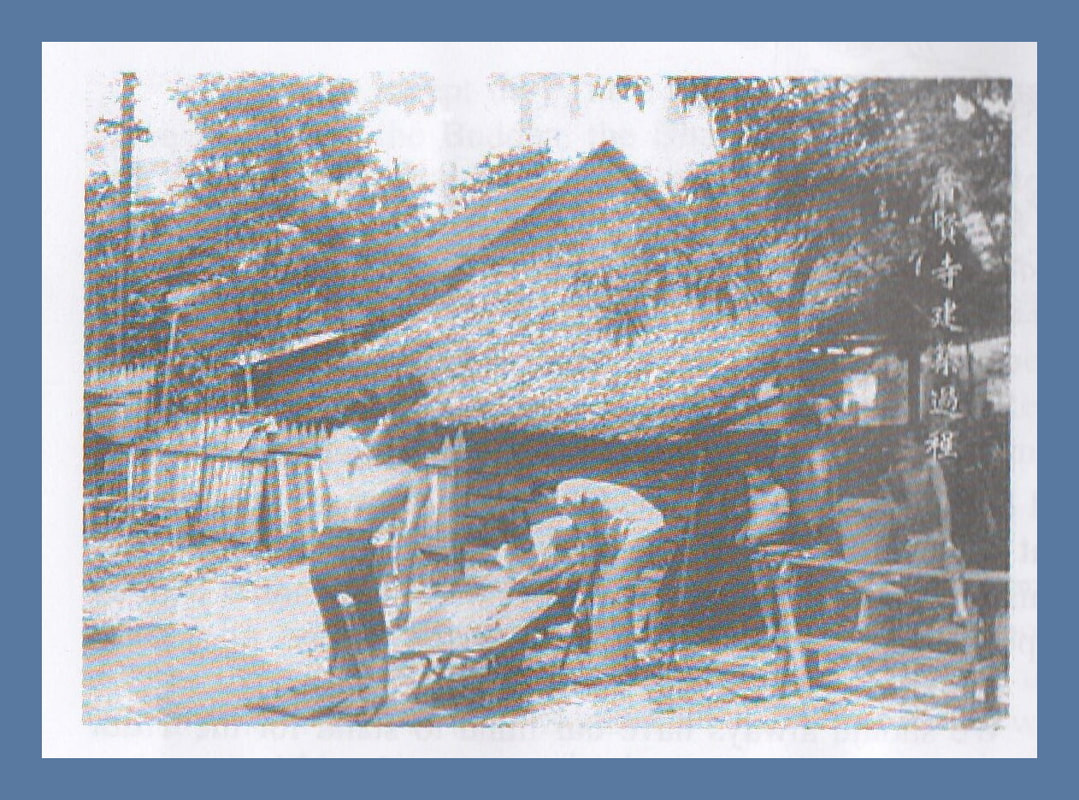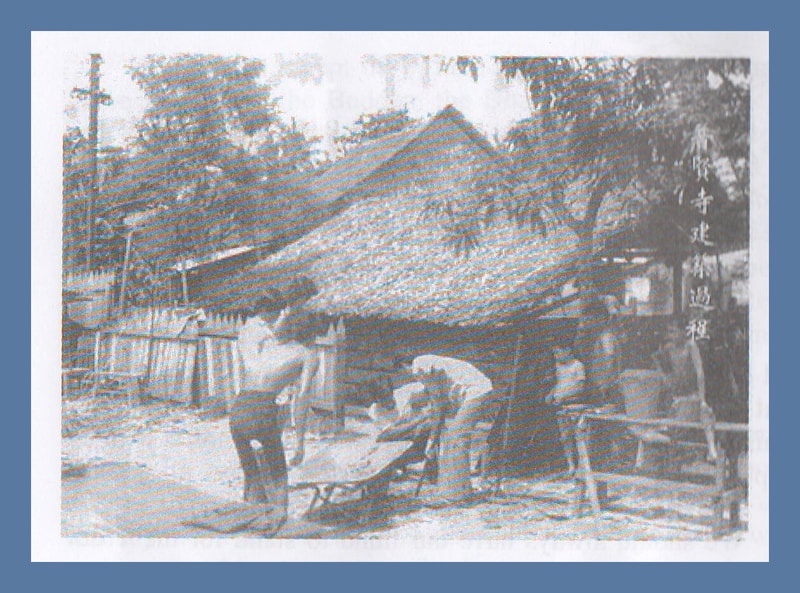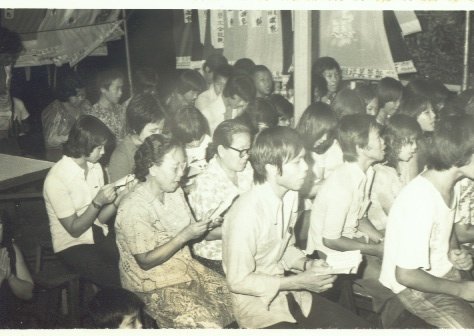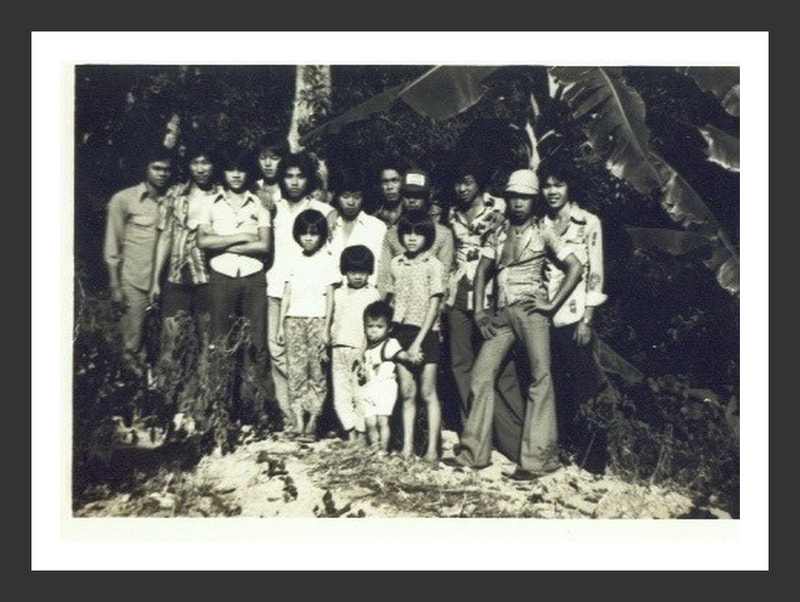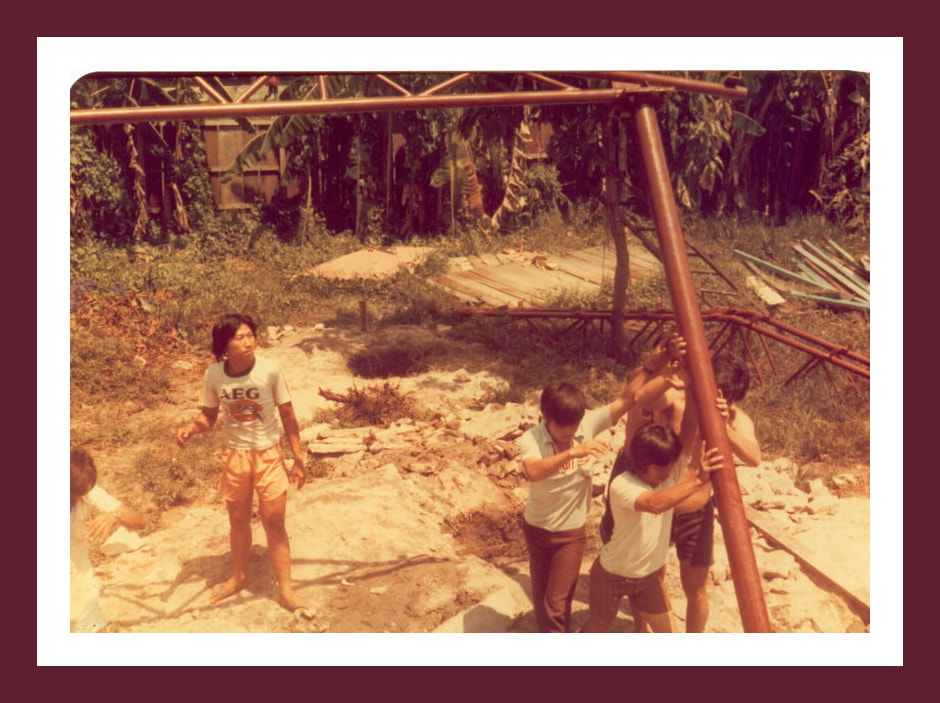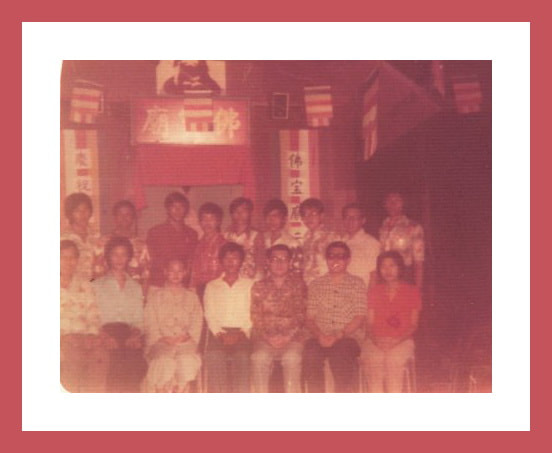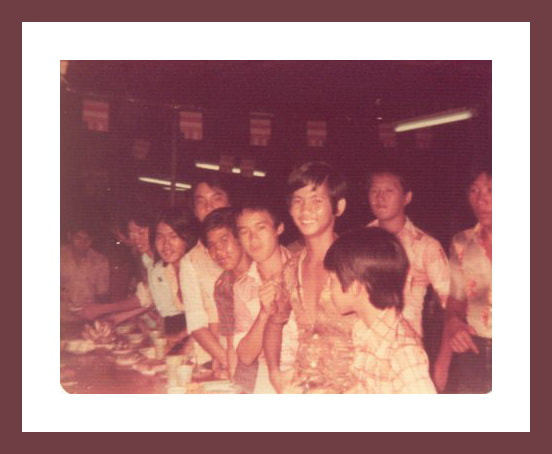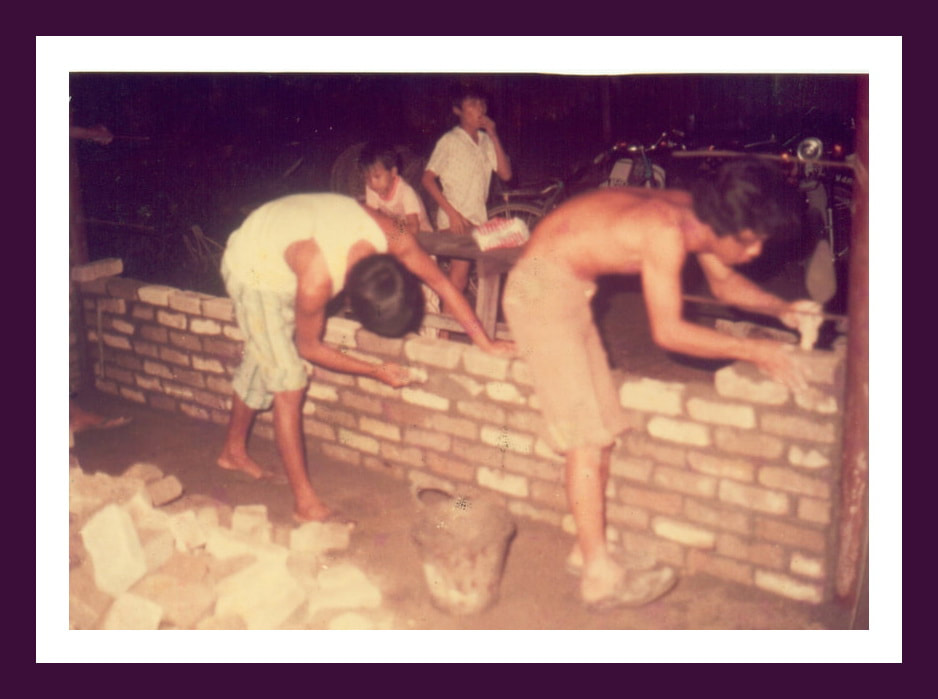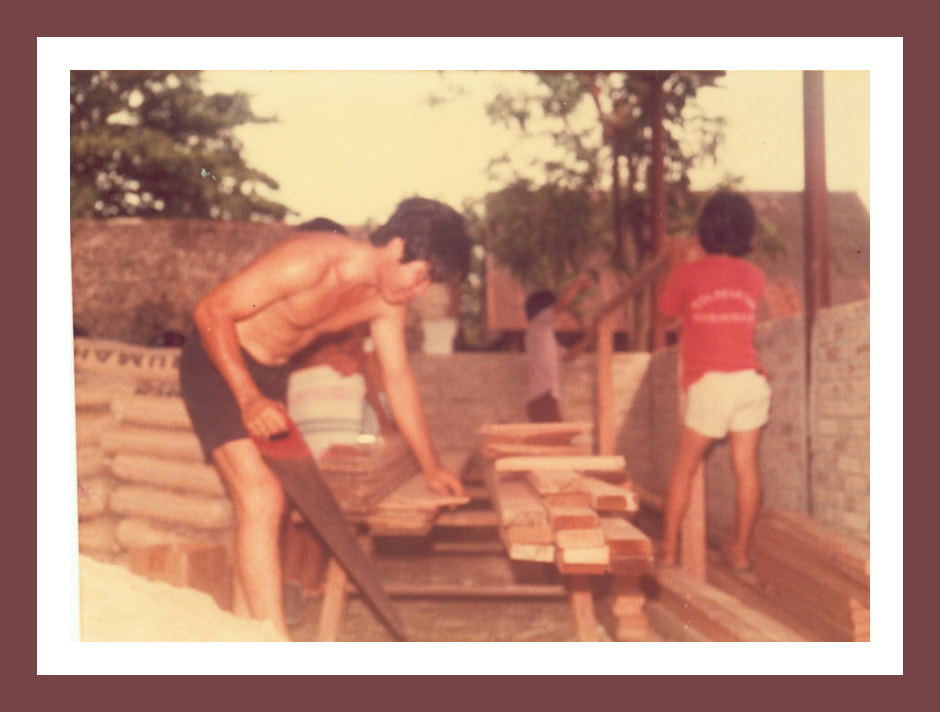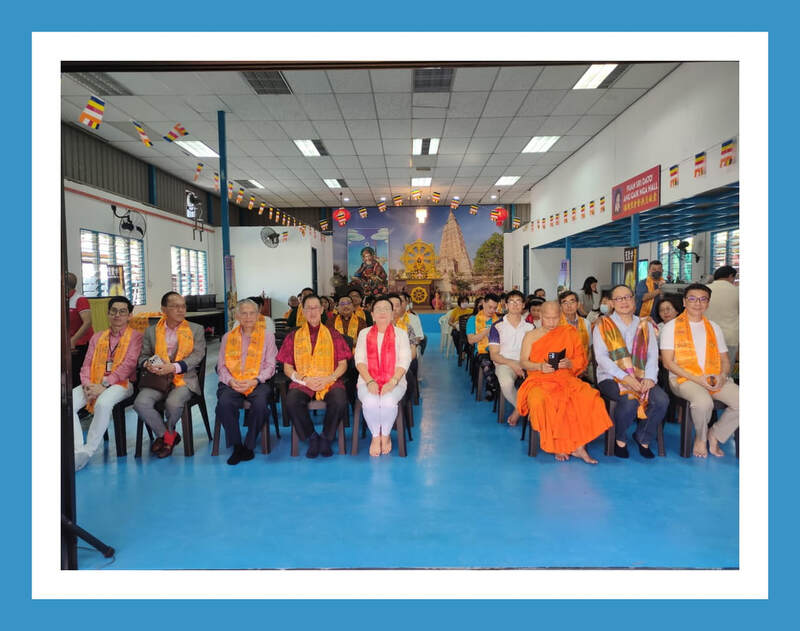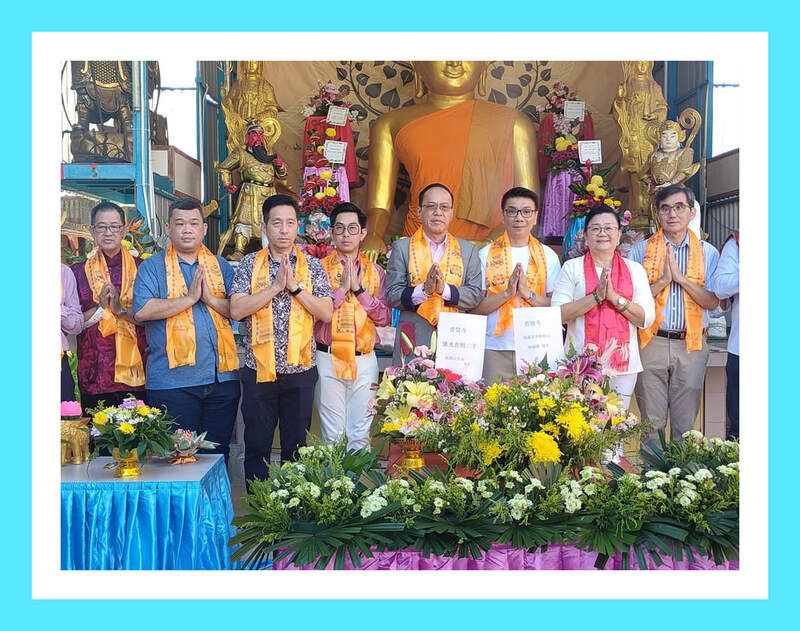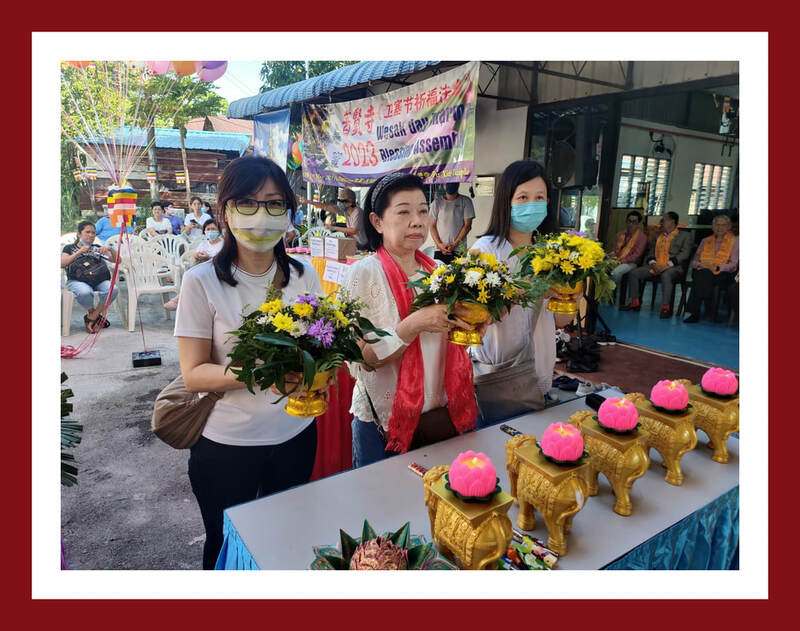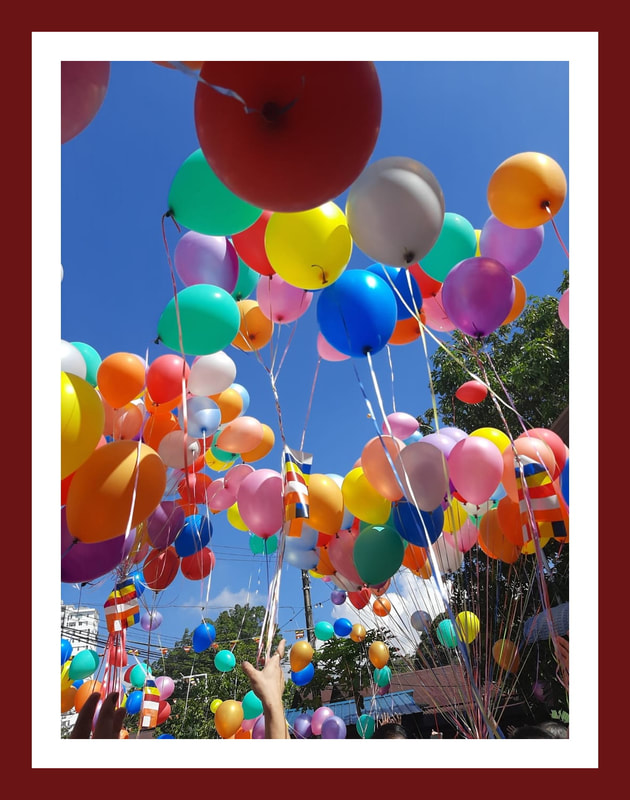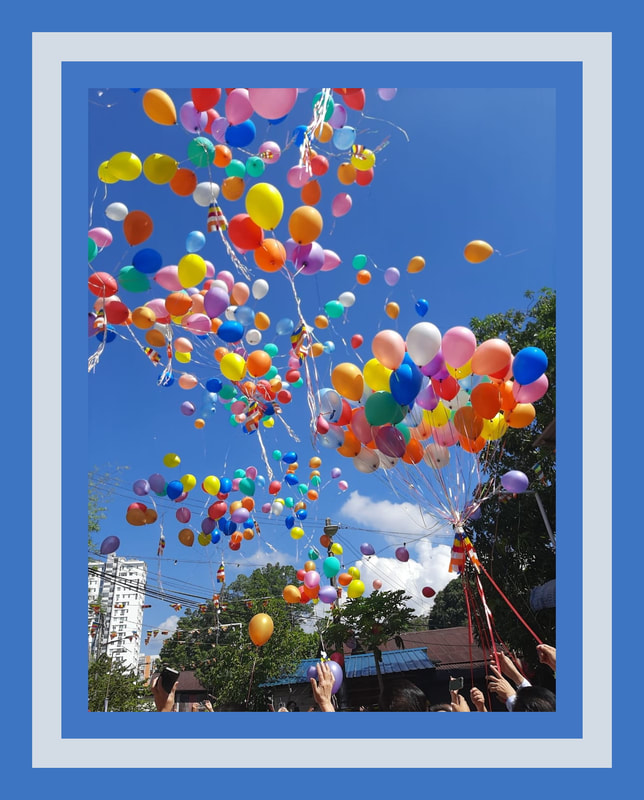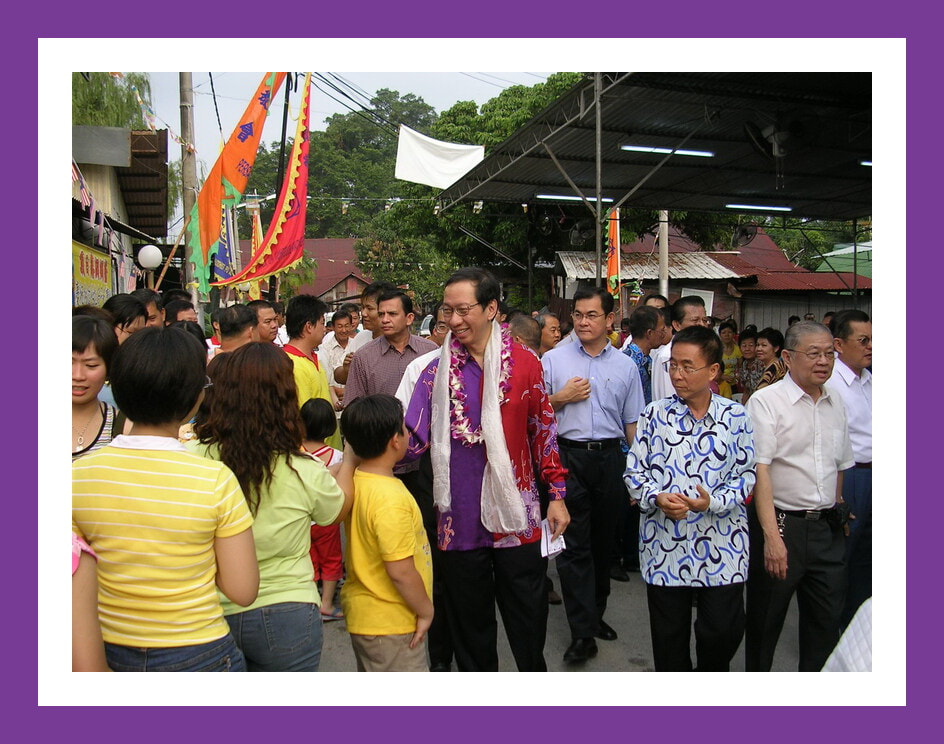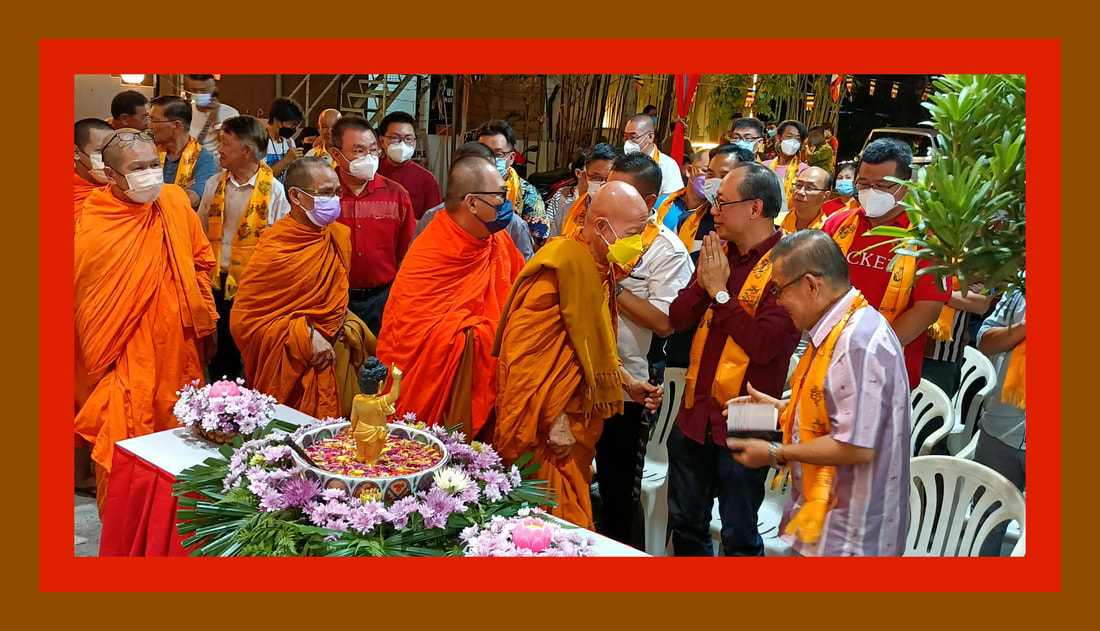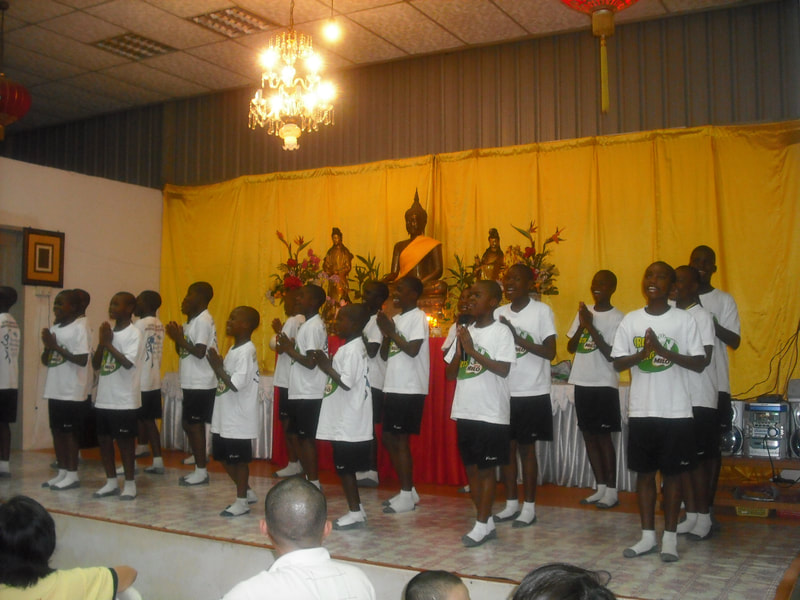A.
Through Inner Peace to World Peace
Address to the Millennium World Peace Summit on 29 August 2000 at the General Assembly Hall of the United Nations
In late August 2000, Goenkaji participated in the Millennium World Peace Summit—a gathering of 1000 of the world’s religious and spiritual leaders, held at the United Nations under the auspices of Secretary-General Kofi Annan.
The purpose of the meeting was to promote tolerance, foster peace, and encourage inter-religious dialogue.
With the many different viewpoints represented, the potential for disagreement was strong. In his presentation to the delegates, Goenkaji tried to highlight what they, and all spiritual paths have in common: the universal Dhamma. His remarks were received with repeated ovations.
Friends, leaders of the spiritual and religious world: This is a wonderful occasion, when we can all unite and serve humanity. Religion is religion only when it unites; when it divides us, it is nothing. Much has been said here about conversion, both for and against. Far from being opposed to conversion, I am in favor of it—but not conversion from one organized religion to another. No, the conversion must be from misery to happiness. It must be from bondage to liberation. It must be from cruelty to compassion. That is the conversion needed today, and that is what this meeting should seek to bring about.
The ancient land of India gave a message of peace and harmony to the world, to all humanity, but it did more: it gave a method, a technique, for achieving peace and harmony. To me it seems that if we want peace in human society, we cannot ignore individuals. If there is no peace in the mind of the individual, I do not understand how there can be real peace in the world. If I have an agitated mind, always full of anger, hatred, ill will and animosity, how can I give peace to the world? I cannot because I have no peace myself. Enlightened persons have therefore said, "First find peace within yourself." One has to examine whether there is really peace within oneself. All the sages, saints, and seers of the world have advised, "Know thyself." That means not merely knowing at the intellectual level, or accepting at the emotional or devotional level, but realizing by experience at the actual level. When you experience the truth about yourself, within yourself, at the experiential level, the problems of life find their solution.
You start understanding the universal law, the law of nature—or, if you prefer, the law of God Almighty. This law is applicable to one and all: When I generate anger, hatred, ill will, or animosity, I am the first victim of my anger. I am the first victim of the hatred or animosity that I have generated within. First I harm myself, and only afterwards do I start harming others. This is the law of nature. If I observe within myself, I find that as soon as any negativity arises in the mind, there is a physical reaction: my body becomes hot and starts burning; there are palpitations and tension; I am miserable. When I generate negativity within me and become miserable, I do not keep the misery limited to myself; instead I throw it on to others. I make the entire atmosphere around me so tense that anyone who comes in contact with me also becomes miserable. Although I talk of peace and happiness, more important than words is what is happening within me. When my mind is free of negativity, again, the law starts working. The moment there is no negativity in the mind, nature—or God Almighty—starts rewarding me: I feel peaceful. This too I can observe within myself.
Whatever one’s religion or tradition or country, when one breaks the law of nature and generates negativity in the mind, one is bound to suffer. Nature itself provides the punishment. Those who break nature’s laws start feeling the misery of hellfire within, here and now. The seed they sow now is a seed of hellfire, and what awaits them after death is nothing but hellfire. Similarly, according to the law of nature, if I keep my mind pure, full of love and compassion, I enjoy the kingdom of heaven within here and now. The seed that I sow will have as its fruit the kingdom of heaven after death.
It makes no difference whether I call myself a Hindu, a Muslim, a Christian or a Jain: a human being is a human being; the human mind is the human mind.
The conversion that is needed is from impurity of mind to purity of mind. This conversion changes people in wonderful ways. It is no magic or miracle; this is a pure science of observing the interaction of mind and matter within. One examines how the mind keeps influencing the material body, and how the body influences the mind. Through patient observation, the law of nature becomes so clear: whenever one generates mental negativity, one starts suffering; and whenever one is free from negativity, one enjoys peace and harmony. This technique of self-observation can be practiced by one and all.
Taught in ancient times by the Enlightened One in India, the technique spread around the world. Today also, people from different communities, traditions and religions come and learn this technique, to obtain the same benefit. They may continue to call themselves Hindu, Buddhist, Muslim, or Christian. These labels make no difference; a human being is a human being. The difference is that through their practice they become truly spiritual people, full of love and compassion. What they are doing is good for themselves and for all others. When someone generates peace in the mind, the entire atmosphere around that person is permeated with the vibration of peace and anyone who encounters that person also starts enjoying peace. This mental change is the real conversion that is required. No other conversion has meaning.
Permit me to read you a benevolent message from India to the world. Inscribed in stone 2300 years ago, these are the words of Emperor Ashoka the Great, an ideal ruler, explaining how to govern. He tells us, "One should not honor only one’s own religion and condemn other faiths." This is an important message for our time. By condemning others and insisting that one’s own tradition is the best, one creates difficulties for humanity. Ashoka continues, "Instead one should honor other religions for various reasons." Every religion worthy of the name has a wholesome essence of love, compassion and goodwill. We should give honor to the religion because of this essence. The outer form always differs; there will be so many variations in rites, rituals, ceremonies or beliefs. Let us not quarrel about all that, but instead give importance to the inner essence. Ashoka says, "By so doing, one helps one’s own religion to grow and also renders service to the religions of others. In acting otherwise, one digs the grave of one’s own religion, and harms other religions as well."
This is a serious warning for us all. The message says, "Someone who honors his own religion and condemns other religions may do so out of devotion to his religion thinking ‘I will glorify my religion,’ but his actions injure his own religion more gravely."
Finally, Ashoka presents the message of the Universal Law, the message of Dhamma: "Let all listen: Concord is good, not quarreling. Let all be willing to listen to the doctrine professed by others." Instead of disagreeing and condemning, let us give importance to the essence of the teaching of every religion. Then, there will be real peace, real harmony.
The original speech you find under: http://www.executive.dhamma.org/en/unaddress0800.shtml
Through Inner Peace to World Peace
Address to the Millennium World Peace Summit on 29 August 2000 at the General Assembly Hall of the United Nations
In late August 2000, Goenkaji participated in the Millennium World Peace Summit—a gathering of 1000 of the world’s religious and spiritual leaders, held at the United Nations under the auspices of Secretary-General Kofi Annan.
The purpose of the meeting was to promote tolerance, foster peace, and encourage inter-religious dialogue.
With the many different viewpoints represented, the potential for disagreement was strong. In his presentation to the delegates, Goenkaji tried to highlight what they, and all spiritual paths have in common: the universal Dhamma. His remarks were received with repeated ovations.
Friends, leaders of the spiritual and religious world: This is a wonderful occasion, when we can all unite and serve humanity. Religion is religion only when it unites; when it divides us, it is nothing. Much has been said here about conversion, both for and against. Far from being opposed to conversion, I am in favor of it—but not conversion from one organized religion to another. No, the conversion must be from misery to happiness. It must be from bondage to liberation. It must be from cruelty to compassion. That is the conversion needed today, and that is what this meeting should seek to bring about.
The ancient land of India gave a message of peace and harmony to the world, to all humanity, but it did more: it gave a method, a technique, for achieving peace and harmony. To me it seems that if we want peace in human society, we cannot ignore individuals. If there is no peace in the mind of the individual, I do not understand how there can be real peace in the world. If I have an agitated mind, always full of anger, hatred, ill will and animosity, how can I give peace to the world? I cannot because I have no peace myself. Enlightened persons have therefore said, "First find peace within yourself." One has to examine whether there is really peace within oneself. All the sages, saints, and seers of the world have advised, "Know thyself." That means not merely knowing at the intellectual level, or accepting at the emotional or devotional level, but realizing by experience at the actual level. When you experience the truth about yourself, within yourself, at the experiential level, the problems of life find their solution.
You start understanding the universal law, the law of nature—or, if you prefer, the law of God Almighty. This law is applicable to one and all: When I generate anger, hatred, ill will, or animosity, I am the first victim of my anger. I am the first victim of the hatred or animosity that I have generated within. First I harm myself, and only afterwards do I start harming others. This is the law of nature. If I observe within myself, I find that as soon as any negativity arises in the mind, there is a physical reaction: my body becomes hot and starts burning; there are palpitations and tension; I am miserable. When I generate negativity within me and become miserable, I do not keep the misery limited to myself; instead I throw it on to others. I make the entire atmosphere around me so tense that anyone who comes in contact with me also becomes miserable. Although I talk of peace and happiness, more important than words is what is happening within me. When my mind is free of negativity, again, the law starts working. The moment there is no negativity in the mind, nature—or God Almighty—starts rewarding me: I feel peaceful. This too I can observe within myself.
Whatever one’s religion or tradition or country, when one breaks the law of nature and generates negativity in the mind, one is bound to suffer. Nature itself provides the punishment. Those who break nature’s laws start feeling the misery of hellfire within, here and now. The seed they sow now is a seed of hellfire, and what awaits them after death is nothing but hellfire. Similarly, according to the law of nature, if I keep my mind pure, full of love and compassion, I enjoy the kingdom of heaven within here and now. The seed that I sow will have as its fruit the kingdom of heaven after death.
It makes no difference whether I call myself a Hindu, a Muslim, a Christian or a Jain: a human being is a human being; the human mind is the human mind.
The conversion that is needed is from impurity of mind to purity of mind. This conversion changes people in wonderful ways. It is no magic or miracle; this is a pure science of observing the interaction of mind and matter within. One examines how the mind keeps influencing the material body, and how the body influences the mind. Through patient observation, the law of nature becomes so clear: whenever one generates mental negativity, one starts suffering; and whenever one is free from negativity, one enjoys peace and harmony. This technique of self-observation can be practiced by one and all.
Taught in ancient times by the Enlightened One in India, the technique spread around the world. Today also, people from different communities, traditions and religions come and learn this technique, to obtain the same benefit. They may continue to call themselves Hindu, Buddhist, Muslim, or Christian. These labels make no difference; a human being is a human being. The difference is that through their practice they become truly spiritual people, full of love and compassion. What they are doing is good for themselves and for all others. When someone generates peace in the mind, the entire atmosphere around that person is permeated with the vibration of peace and anyone who encounters that person also starts enjoying peace. This mental change is the real conversion that is required. No other conversion has meaning.
Permit me to read you a benevolent message from India to the world. Inscribed in stone 2300 years ago, these are the words of Emperor Ashoka the Great, an ideal ruler, explaining how to govern. He tells us, "One should not honor only one’s own religion and condemn other faiths." This is an important message for our time. By condemning others and insisting that one’s own tradition is the best, one creates difficulties for humanity. Ashoka continues, "Instead one should honor other religions for various reasons." Every religion worthy of the name has a wholesome essence of love, compassion and goodwill. We should give honor to the religion because of this essence. The outer form always differs; there will be so many variations in rites, rituals, ceremonies or beliefs. Let us not quarrel about all that, but instead give importance to the inner essence. Ashoka says, "By so doing, one helps one’s own religion to grow and also renders service to the religions of others. In acting otherwise, one digs the grave of one’s own religion, and harms other religions as well."
This is a serious warning for us all. The message says, "Someone who honors his own religion and condemns other religions may do so out of devotion to his religion thinking ‘I will glorify my religion,’ but his actions injure his own religion more gravely."
Finally, Ashoka presents the message of the Universal Law, the message of Dhamma: "Let all listen: Concord is good, not quarreling. Let all be willing to listen to the doctrine professed by others." Instead of disagreeing and condemning, let us give importance to the essence of the teaching of every religion. Then, there will be real peace, real harmony.
The original speech you find under: http://www.executive.dhamma.org/en/unaddress0800.shtml
星云法语
1. 佛法,传播爱的种子(中文版)
BUDDHA DHARMA , LET SPREADS THE SEEDS OF LOVE (CHINESE VERSION)
2.佛法,传播爱的种子(英文版)
BUDDHA DHARMA , LET SPREADS THE SEEDS OF LOVE (ENGLISH VERSION)
英國佛學家貢布里奇的慧語 Richard Gombrich’s words of wisdom💥
在牛津大學任教四十餘年的理察德貢布里奇教授(Richard Gombrich)將畢生精力奉獻給了佛學與巴利文研究。佛教的真諦常常被誤解、扭曲,以下是英國知名佛學家,高齡80歲的理察德貢布里奇教授的心得。
Professor Richard Gombrich, who dedicated 40 years of his life to studying Buddhism and Pali language at Oxford University, shares his understanding of Buddhism.
01.當我說我是佛教徒時,不是說我比別人更純潔善良,而是我有太多無明煩惱需要去除,我需要佛陀的智慧。
When I say I’m a Buddhist, it doesn’t mean I’m purer and nicer than others. But it means I have too much ignorance and mental defilement to remove. I need Buddhas' wisdom.
02.當我說我是佛教徒時,不是說我比別人更具有智慧,而是我被太多的傲慢所盤據,我需要學習謙卑開拓更寬闊的視野。
When I say I’m a Buddhist, it doesn’t mean I have more wisdom than others. But it means I have been occupied by too much arrogance. I need to learn to be humble and to develop a broader perspective.
03.當我說我是佛教徒時,不是因為我比別人更好或更壞,而是我瞭解到眾生的平等無二。
When I say I’m a Buddhist, it is not because I am better or worse than others, but because I understand all beings are equal.
04.當我說我是佛教徒時,是因為我只能愛跟自己情投意合的人,而佛陀卻能愛自己所不喜歡的人,並引導他們具足智慧與慈悲,所以我選擇追隨佛陀的教導!
When I say I’m a Buddhist, I know I only love those to my taste, but Buddha loves even people he does not like, guiding them to be full of wisdom and compassion. That’s why I choose to follow Buddha’s teachings!
05.當我說我是佛教徒時,不是為了從此求福得福,而是為了了斷自己對一切欲望的執著!
When I say I’m a Buddhist, it is not with the goal of getting what’s in my interest. But for letting go of my personal clinging to all worldly desires.
06.當我說我是佛教徒時,不是為了人生一帆風順,而是為了坦然接受無常,在任何違逆的境遇下,從容自信如君王
When I say I am a Buddhist, it is not because I pursue a smooth life. But for the calm acceptance of impermanence, and be calm and confident like a king in any adverse circumstances.
07.當我說我是佛教徒時,不是要以自利的動機操控他人,而是要善用智慧,對眾生充滿同理心,自利利他。
When I say I am a Buddhist, I do not mean to manipulate others with the motivation of self-interest. But with good use of wisdom, to benefit self and others while being empathetic to all sentient beings.
08.當我說我是佛教徒時,不是因為我要逃避人世、追求空無,而是深知日常生活處處是道場,活在當下就是在修行!
When I say I am a Buddhist, it is not because I want to escape from the world and pursue nothingness. But to know everyday life is within Dharma, and to live in the present is to practice.
09.當我說我是佛教徒時,我的生命並非從此不再遭遇挫折,但是有了佛法相伴,挫折轉化成助我成長的因緣!
When I say I am a Buddhist, it does not mean that my life will no longer experience setbacks.
But with the Dharma, setbacks are transformed into a cause for my growth.
10.當我說我是佛教徒時,我心中充滿無盡的感恩, 單單想到今生有緣生而為人,具備修行的能力,又有機會遇到善知識,得以聽聞佛法,就深心感動因緣不可思議!
When I say I am a Buddhist, my heart is filled with endless gratitude. Just thinking I was born as a human and have the ability to practice in this life, with the opportunity to meet wise teachers and hear the Buddha's teachings, I am deeply moved by this unbelievable karmic affinity.
11.當我說我是佛教徒時,不是因為外在有一個神,而是我發現了我本具的自心佛性!
When I say I am a Buddhist, it is not because there is a God outside me. But that I find the true Buddha-nature of my own heart.
·
在牛津大學任教四十餘年的理察德貢布里奇教授(Richard Gombrich)將畢生精力奉獻給了佛學與巴利文研究。佛教的真諦常常被誤解、扭曲,以下是英國知名佛學家,高齡80歲的理察德貢布里奇教授的心得。
Professor Richard Gombrich, who dedicated 40 years of his life to studying Buddhism and Pali language at Oxford University, shares his understanding of Buddhism.
01.當我說我是佛教徒時,不是說我比別人更純潔善良,而是我有太多無明煩惱需要去除,我需要佛陀的智慧。
When I say I’m a Buddhist, it doesn’t mean I’m purer and nicer than others. But it means I have too much ignorance and mental defilement to remove. I need Buddhas' wisdom.
02.當我說我是佛教徒時,不是說我比別人更具有智慧,而是我被太多的傲慢所盤據,我需要學習謙卑開拓更寬闊的視野。
When I say I’m a Buddhist, it doesn’t mean I have more wisdom than others. But it means I have been occupied by too much arrogance. I need to learn to be humble and to develop a broader perspective.
03.當我說我是佛教徒時,不是因為我比別人更好或更壞,而是我瞭解到眾生的平等無二。
When I say I’m a Buddhist, it is not because I am better or worse than others, but because I understand all beings are equal.
04.當我說我是佛教徒時,是因為我只能愛跟自己情投意合的人,而佛陀卻能愛自己所不喜歡的人,並引導他們具足智慧與慈悲,所以我選擇追隨佛陀的教導!
When I say I’m a Buddhist, I know I only love those to my taste, but Buddha loves even people he does not like, guiding them to be full of wisdom and compassion. That’s why I choose to follow Buddha’s teachings!
05.當我說我是佛教徒時,不是為了從此求福得福,而是為了了斷自己對一切欲望的執著!
When I say I’m a Buddhist, it is not with the goal of getting what’s in my interest. But for letting go of my personal clinging to all worldly desires.
06.當我說我是佛教徒時,不是為了人生一帆風順,而是為了坦然接受無常,在任何違逆的境遇下,從容自信如君王
When I say I am a Buddhist, it is not because I pursue a smooth life. But for the calm acceptance of impermanence, and be calm and confident like a king in any adverse circumstances.
07.當我說我是佛教徒時,不是要以自利的動機操控他人,而是要善用智慧,對眾生充滿同理心,自利利他。
When I say I am a Buddhist, I do not mean to manipulate others with the motivation of self-interest. But with good use of wisdom, to benefit self and others while being empathetic to all sentient beings.
08.當我說我是佛教徒時,不是因為我要逃避人世、追求空無,而是深知日常生活處處是道場,活在當下就是在修行!
When I say I am a Buddhist, it is not because I want to escape from the world and pursue nothingness. But to know everyday life is within Dharma, and to live in the present is to practice.
09.當我說我是佛教徒時,我的生命並非從此不再遭遇挫折,但是有了佛法相伴,挫折轉化成助我成長的因緣!
When I say I am a Buddhist, it does not mean that my life will no longer experience setbacks.
But with the Dharma, setbacks are transformed into a cause for my growth.
10.當我說我是佛教徒時,我心中充滿無盡的感恩, 單單想到今生有緣生而為人,具備修行的能力,又有機會遇到善知識,得以聽聞佛法,就深心感動因緣不可思議!
When I say I am a Buddhist, my heart is filled with endless gratitude. Just thinking I was born as a human and have the ability to practice in this life, with the opportunity to meet wise teachers and hear the Buddha's teachings, I am deeply moved by this unbelievable karmic affinity.
11.當我說我是佛教徒時,不是因為外在有一個神,而是我發現了我本具的自心佛性!
When I say I am a Buddhist, it is not because there is a God outside me. But that I find the true Buddha-nature of my own heart.
·
The following is the complete text of the address given by Mr. Goenka on Tuesday, 29 August 2000 in the United Nations General Assembly Hall to the participants of the Millennium World Peace Summit.
When there is darkness, light is needed. Today, with so much agony caused by violent conflict, war and bloodshed, the world badly needs peace and harmony. This is a great challenge for religious and spiritual leaders. Let us accept this challenge.
Every religion has an outer form or shell, and an inner essence or core. The outer shell consists of rites, rituals, ceremonies, beliefs, myths and doctrines. These vary from one religion to another. But there is an inner core common to all religions: the universal teachings of morality and charity, of a disciplined and pure mind full of love, compassion, good will and tolerance.. It is this common denominator that religious leaders ought to emphasize, and that religious adherents ought to practice. If proper importance is given to the essence of all religions and greater tolerance is shown for their superficial aspects, conflict can be minimized.
All persons must be free to profess and follow their faith. In doing so, however, they must be careful not to neglect the practice of the essence of their religion, not to disturb others by their own religious practices, and not to condemn or belittle other faiths.
Given the diversity of faiths, how do we surmount the differences and achieve a concrete plan for peace? The Buddha, the Enlightened One, was often approached by people of different views. To them he would say, "Let us set aside our differences. Let us give attention to what we can agree on, and let us put it into practice. Why quarrel?" That wise counsel still retains its worth today.
I come from an ancient land that has given rise to many different schools of philosophy and spirituality over the millennia. Despite isolated instances of violence, my country has been a model of peaceful co-existence. Some 2300 years ago it was ruled by Ashoka the Great, whose empire extended from present-day Afghanistan to Bangladesh. Throughout his realm, this compassionate ruler caused edicts to be inscribed on stone, proclaiming that all faiths should be respected; and as a result, followers of all spiritual traditions felt secure under his sway. He asked people to live a moral life, to respect parents and elders, and to abstain from killing. The words in which he exhorted his subjects are still relevant today:
One should not honor only one's own religion and condemn other religions. Instead, one should honor other religions for various reasons. By so doing one helps one's own religion to grow and also renders service to the religions of others. In acting otherwise one digs the grave of one's own religion and harms other religions as well. Someone who honors his own religion and condemns other religions may do so out of devotion to his religion, thinking, 'I will glorify my religion'; but his actions injure his own religion more gravely. Concord is good. Let all listen and be willing to listen to the doctrines professed by others. (Rock Edict 12)
Emperor Ashoka represents a glorious tradition of tolerant co-existence and peaceful synthesis. That tradition lives on among governments and rulers today. An example is the noble monarch of Oman, who has donated land for churches and temples of other faiths while practicing his own religion with all devotion and diligence. I am sure that such compassionate rulers and governments will continue to arise in future in many lands around the world. As it is said, "Blessed are the peacemakers, for they shall be called sons of God."
It is all too clear that the votaries of violence primarily hurt their own kith and kin. They may do so directly, through their intolerance, or indirectly, by provoking a violent response to their actions. On the other hand, it is said, "Blessed are the merciful, for they shall obtain mercy." This is the law of nature. It may equally be called the decree or way of God. The Buddha said, "Animosity can be eradicated not by animosity but only by its opposite. This is an eternal Dharma [spiritual law]." What is called Dharma in India has nothing to do with Hinduism, Buddhism, Jainism, Christianity, Islam, Judaism, Sikhism or any other "ism".. It is this simple truth: before you harm others, you first harm yourself by generating mental negativity; and by removing the negativity, you can find peace within and strengthen peace in the world.
Peace of Mind For World Peace
Every religion worthy of the name calls on its followers to live a moral and ethical way of life, to attain mastery over the mind and to cultivate purity of heart. One tradition tells us, "Love thy neighbor"; another says, Salaam walekum-"May peace be with you"; still another says, Bhavatu sabba mangalam or Sarve bhavantu sukhinah-"May all beings be happy." Whether it is the Bible, the Koran or the Gita, the scriptures call for peace and amity. From Mahavir to Jesus, all great founders of religions have been ideals of tolerance and peace. Yet our world is often riven by religious and sectarian strife, or even war-because we give importance only to the outer shell of religion and neglect its essence. The result is a lack of love and compassion in the mind.
Peace in the world cannot be achieved unless there is peace within individuals. Agitation and peace cannot co-exist. One way to achieve inner peace is Vipassana or insight meditation-a non-sectarian, scientific, results-oriented technique of self-observation and truth realization. Practice of this technique brings experiential understanding of how mind and body interact. Every time negativity arises in the mind, such as hatred, it triggers unpleasant sensations within the body. Every time the mind generates selfless love, compassion and good will, the entire body is flooded with pleasant sensations. Practice of Vipassana also reveals that mental action precedes every physical and vocal action, determining whether that action will be wholesome or unwholesome. Mind matters most. That is why we must find practical methods to make the mind peaceful and pure. Such methods will amplify the effectiveness of the joint declaration emerging from this World Peace Summit.
Ancient India gave two practices to the world. One is the physical exercise of yoga postures (Asanas) and breath control (Pranayama) for keeping the body healthy. The other is the mental exercise of Vipassana for keeping the mind healthy. People of any faith can and do practice both these methods. At the same time, they may follow their own religions in peace and harmony; there is no necessity for conversion, a common source of tension and conflict.
For society to be peaceful, more and more members of society must be peaceful. As leaders, we have a responsibility to set an example, to be an inspiration. A sage once said, "A balanced mind is necessary to balance the unbalanced mind of others."
More broadly, a peaceful society will find a way to live in peace with its natural setting. We all understand the need to protect the environment, to stop polluting it. What prevents us from acting on this understanding is the stock of mental pollutants, such as ignorance, cruelty or greed. Removing such pollutants will promote peace among human beings, as well as a balanced, healthy relationship between human society and its natural environment. This is how religion can foster environmental protection.
Non-Violence: the Key to a Definition of Religion
There are bound to be differences between religions. However, by gathering at this World Peace Summit, leaders of all the major faiths have shown that they want to work for peace. Let peace then be the first principle of "universal religion". Let us declare together that we shall abstain from killing, that we condemn violence. I also urge political leaders to join in this declaration, given the key role they play in bringing either peace or war.. Whether or not they join us, at least let us all make a vow here and now: instead of condoning violence and killing, let us declare that we unconditionally condemn such deeds, especially violence perpetrated in the name of religion.
Certain spiritual leaders have had the sagacity and courage to condemn violence committed in the name of their own faith. There may be different philosophical and theological views of the act of seeking forgiveness or regretting past violence and killing; but the very acknowledgment of violence performed in the past implies that it was wrong and that it will not be condoned in future.
Under the aegis of the United Nations, let us try to formulate a definition of religion and spirituality highlighting non-violence, and refusing to countenance violence or killing. There would be no greater misfortune for humanity than a failure to define religion as synonymous with peace. This Summit could propose a concept of "universal religion" or "non-sectarian spirituality", for endorsement by the UN.
I am sure that this Summit will help focus the world's attention on the true purpose of religion:
Religion sets us not apart;
it teaches peace and purity of heart.
I congratulate the organizers of this historic Summit for their vision and efforts. And I congratulate the religious and spiritual leaders who have had the maturity to work for reconciliation, giving hope to humanity that religion and spirituality will lead to a peaceful future.
May all beings be free from aversion and be happy.
May peace and harmony prevail.
When there is darkness, light is needed. Today, with so much agony caused by violent conflict, war and bloodshed, the world badly needs peace and harmony. This is a great challenge for religious and spiritual leaders. Let us accept this challenge.
Every religion has an outer form or shell, and an inner essence or core. The outer shell consists of rites, rituals, ceremonies, beliefs, myths and doctrines. These vary from one religion to another. But there is an inner core common to all religions: the universal teachings of morality and charity, of a disciplined and pure mind full of love, compassion, good will and tolerance.. It is this common denominator that religious leaders ought to emphasize, and that religious adherents ought to practice. If proper importance is given to the essence of all religions and greater tolerance is shown for their superficial aspects, conflict can be minimized.
All persons must be free to profess and follow their faith. In doing so, however, they must be careful not to neglect the practice of the essence of their religion, not to disturb others by their own religious practices, and not to condemn or belittle other faiths.
Given the diversity of faiths, how do we surmount the differences and achieve a concrete plan for peace? The Buddha, the Enlightened One, was often approached by people of different views. To them he would say, "Let us set aside our differences. Let us give attention to what we can agree on, and let us put it into practice. Why quarrel?" That wise counsel still retains its worth today.
I come from an ancient land that has given rise to many different schools of philosophy and spirituality over the millennia. Despite isolated instances of violence, my country has been a model of peaceful co-existence. Some 2300 years ago it was ruled by Ashoka the Great, whose empire extended from present-day Afghanistan to Bangladesh. Throughout his realm, this compassionate ruler caused edicts to be inscribed on stone, proclaiming that all faiths should be respected; and as a result, followers of all spiritual traditions felt secure under his sway. He asked people to live a moral life, to respect parents and elders, and to abstain from killing. The words in which he exhorted his subjects are still relevant today:
One should not honor only one's own religion and condemn other religions. Instead, one should honor other religions for various reasons. By so doing one helps one's own religion to grow and also renders service to the religions of others. In acting otherwise one digs the grave of one's own religion and harms other religions as well. Someone who honors his own religion and condemns other religions may do so out of devotion to his religion, thinking, 'I will glorify my religion'; but his actions injure his own religion more gravely. Concord is good. Let all listen and be willing to listen to the doctrines professed by others. (Rock Edict 12)
Emperor Ashoka represents a glorious tradition of tolerant co-existence and peaceful synthesis. That tradition lives on among governments and rulers today. An example is the noble monarch of Oman, who has donated land for churches and temples of other faiths while practicing his own religion with all devotion and diligence. I am sure that such compassionate rulers and governments will continue to arise in future in many lands around the world. As it is said, "Blessed are the peacemakers, for they shall be called sons of God."
It is all too clear that the votaries of violence primarily hurt their own kith and kin. They may do so directly, through their intolerance, or indirectly, by provoking a violent response to their actions. On the other hand, it is said, "Blessed are the merciful, for they shall obtain mercy." This is the law of nature. It may equally be called the decree or way of God. The Buddha said, "Animosity can be eradicated not by animosity but only by its opposite. This is an eternal Dharma [spiritual law]." What is called Dharma in India has nothing to do with Hinduism, Buddhism, Jainism, Christianity, Islam, Judaism, Sikhism or any other "ism".. It is this simple truth: before you harm others, you first harm yourself by generating mental negativity; and by removing the negativity, you can find peace within and strengthen peace in the world.
Peace of Mind For World Peace
Every religion worthy of the name calls on its followers to live a moral and ethical way of life, to attain mastery over the mind and to cultivate purity of heart. One tradition tells us, "Love thy neighbor"; another says, Salaam walekum-"May peace be with you"; still another says, Bhavatu sabba mangalam or Sarve bhavantu sukhinah-"May all beings be happy." Whether it is the Bible, the Koran or the Gita, the scriptures call for peace and amity. From Mahavir to Jesus, all great founders of religions have been ideals of tolerance and peace. Yet our world is often riven by religious and sectarian strife, or even war-because we give importance only to the outer shell of religion and neglect its essence. The result is a lack of love and compassion in the mind.
Peace in the world cannot be achieved unless there is peace within individuals. Agitation and peace cannot co-exist. One way to achieve inner peace is Vipassana or insight meditation-a non-sectarian, scientific, results-oriented technique of self-observation and truth realization. Practice of this technique brings experiential understanding of how mind and body interact. Every time negativity arises in the mind, such as hatred, it triggers unpleasant sensations within the body. Every time the mind generates selfless love, compassion and good will, the entire body is flooded with pleasant sensations. Practice of Vipassana also reveals that mental action precedes every physical and vocal action, determining whether that action will be wholesome or unwholesome. Mind matters most. That is why we must find practical methods to make the mind peaceful and pure. Such methods will amplify the effectiveness of the joint declaration emerging from this World Peace Summit.
Ancient India gave two practices to the world. One is the physical exercise of yoga postures (Asanas) and breath control (Pranayama) for keeping the body healthy. The other is the mental exercise of Vipassana for keeping the mind healthy. People of any faith can and do practice both these methods. At the same time, they may follow their own religions in peace and harmony; there is no necessity for conversion, a common source of tension and conflict.
For society to be peaceful, more and more members of society must be peaceful. As leaders, we have a responsibility to set an example, to be an inspiration. A sage once said, "A balanced mind is necessary to balance the unbalanced mind of others."
More broadly, a peaceful society will find a way to live in peace with its natural setting. We all understand the need to protect the environment, to stop polluting it. What prevents us from acting on this understanding is the stock of mental pollutants, such as ignorance, cruelty or greed. Removing such pollutants will promote peace among human beings, as well as a balanced, healthy relationship between human society and its natural environment. This is how religion can foster environmental protection.
Non-Violence: the Key to a Definition of Religion
There are bound to be differences between religions. However, by gathering at this World Peace Summit, leaders of all the major faiths have shown that they want to work for peace. Let peace then be the first principle of "universal religion". Let us declare together that we shall abstain from killing, that we condemn violence. I also urge political leaders to join in this declaration, given the key role they play in bringing either peace or war.. Whether or not they join us, at least let us all make a vow here and now: instead of condoning violence and killing, let us declare that we unconditionally condemn such deeds, especially violence perpetrated in the name of religion.
Certain spiritual leaders have had the sagacity and courage to condemn violence committed in the name of their own faith. There may be different philosophical and theological views of the act of seeking forgiveness or regretting past violence and killing; but the very acknowledgment of violence performed in the past implies that it was wrong and that it will not be condoned in future.
Under the aegis of the United Nations, let us try to formulate a definition of religion and spirituality highlighting non-violence, and refusing to countenance violence or killing. There would be no greater misfortune for humanity than a failure to define religion as synonymous with peace. This Summit could propose a concept of "universal religion" or "non-sectarian spirituality", for endorsement by the UN.
I am sure that this Summit will help focus the world's attention on the true purpose of religion:
Religion sets us not apart;
it teaches peace and purity of heart.
I congratulate the organizers of this historic Summit for their vision and efforts. And I congratulate the religious and spiritual leaders who have had the maturity to work for reconciliation, giving hope to humanity that religion and spirituality will lead to a peaceful future.
May all beings be free from aversion and be happy.
May peace and harmony prevail.
1. INTRODUCTION
PU XIAN TEMPLE
Somewhere in the year 1973 a funeral chanting group from the Penang Buddhist Association was engaged to chant at a funeral service in the Jelutong area. This chanting service caught the attention of a young boy who was then motivated to learn Buddhist chanting. He is none other than our Bro, Tan Kooi Beng. This young boy later influenced some other boys and girls to learn up Buddhist chanting.
Later in August 1975, Bro Tan Kooi Beng, Bro Yeoh Chin Beng and together with other boys built a small Buddhist temple called FO POW MEOW or GEM OF THE BUDDHA TEMPLE which can accommodate only 5 people. It was said to be the smallest Buddhist temple in the Malaysia This temple was later renamed the PU XIAN TEMPLE or Samantrabhadra Vihara.
In the year 1978, JELUTONG YOUNG BUDDHIST SOCIETY which was attached to PU XIAN TEMPLE was officially registered. It was later renamed as the PU XIAN BUDDHIST ASSOCIATION.
The founding leader of Pu Xian Temple, Bro. Tan Kooi Beng led the youngest independent, non-sectarian Buddhist organization in Malaysia. He started to spread Buddhism at his age of 15 to some local boys and girls in his village. By collecting TEN cents from each of them, he managed to gather a total of twenty-seven Malaysian ringgit as an activity fund. Regularly they carried out their prayers and paid homage to the little Buddha statue (about 3 inches). In his strive for the Dharma, Bro. Tan felt the need for the change in the approaches of Dharma propagation. He tirelessly and consistently called for reformation and changes in attitudes and approaches towards Buddhist Missionary works. The small new Buddhist group grew and a proper chanting place was needed. It all started some 47 years ago, with the concerted efforts from the rest, they built the smallest Buddhist Temple measuring by 10 x 10 feet which accommodate only for five people. The hard work progressed and they received the acceptance and recognition of others. Many were touched, devotees and the public came forward and continued to donate for the reconstruction of the temple. With hard work and much dedication, today Pu Xian Temple was rebuilt and well established. The inspiration of the 3 inches’ Buddha statue has moved many till today. Presently, the temple is enshrined with 15 feet bronze Buddha statue weighting 1000 kilograms, the biggest bronze sitting Buddha statue in Penang. Later, a 15 feet tall standing Buddha statue was erected in the temple. The exemplary dedications and selflessness of the devotees are highly appreciated.
Being a young and independent organization, Pu Xian Temple faced many difficulties in raising funds. From the sale of book marks, its members managed to raise a sum of 1,200 Malaysia ringgit. With this small amount of money, they began to work on the initial temple site. However, the money raised was only enough to build the temple’s eight pillars. They tried to raise more funds by other means, such as doing odd jobs, providing boating services with their own fishing boats, running bicycle parks. All the proceeds were donated to the building fund. After much effort, the roof was completed and the floor cemented. After 4 months of hard work, the four feet high wall was finally built. This slow progress was because of the financial problems. Later, the members found no way to continue their plans for extension.
A year later, the extensions were completed with the kind and generous donations of philanthropist, Datuk Low Hooi Siah. The building now stands proudly and magnificently in the Jelutong district. In total, it took 360 days of the member’s labour and time. They worked voluntarily every night after work. Obviously, these were difficult and challenging tasks for the young leaders who were still teenagers at the time. Nevertheless, with their firm determination and grit, they have brought the light of the Dharma to the Jelutong area. The PU XIAN TEMPLE and the PU XIAN Buddhist Association were named to signify the members’ vows and aims to fulfil the ten aspiration or precepts of the great Bodhisattva Samantabhadra or Bodhisattva Pu Xian. Proudly, these young boys had made a very unique history of building the smallest Buddhist Temple in the recent records and they became the youngest registered Buddhist organization in Malaysia.
2. To praise to all Tathagatas.
3. To make extensive offerings.
4. To repent all evil deeds.
5. To rejoice in other people's merits.
6. To request teachings from the Buddha.
7. To implore the Buddhas and Bodhisattvas to remain in the world for a long time.
8. To follow the Buddha's teachings at all times.
9. To always conform to the aspirations of all sentient beings.
10. To dedicate every merit one has accumulated to all sentient beings.
Our Four Principles 1. Through Culture we propagate Buddhism.
2. Through Education we cultivate future leaders.
3. Through Charity we serve society.
4. Through Recreation we nurture human minds.
Our Motto
TOGETHER FOR BUDDHISM
Our Mission
TOWARDS A BETTER AND MORE COMPASSIONATE SOCIETY THROUGH BUDDHISM
Our Belief
ACTION SPEAKS LOUDER THAN WORDS
Our Aspiration
Together with all sincere Buddhists, we will uphold the Dharma placing the Dharma above everything else, we are willing to unite and work together to propagate Buddhism to all corners of the world.
Guided by our Four Principles, We vow to follow the Bodhisattva path, by first serving society before renouncing it, by helping the living before serving the dead. We shall propagate and promote Humanistic Buddhism, thereby creating a Pure Land on this very earth.
6. CONCLUSION
Through the Dharma propagation programs, bad elements have turned into useful citizens and innocent youths have been prevented from being misled into crimes and drug abuse. With sincerity and through the guidance of Lord Buddha and the Bodhisattvas, the enthusiastic members of the temple have brought the light of the Dharma to the Jelutong area. Although they are not well educated, they are hard-working and dedicated Buddhists, In the face of administrative and financial difficulties, their young leader had succeeded in leading the group in setting up their temple. Their dedication and selflessness have set a good example for all Buddhists. If you share and agree with our motto, our mission, our principles, our belief and our concern then give us your unflinching support. With strong minds, sincere hearts and true faith, let us join hands and work together to build a better future for the welfare and benefit of all mankind.
PU XIAN TEMPLE
Somewhere in the year 1973 a funeral chanting group from the Penang Buddhist Association was engaged to chant at a funeral service in the Jelutong area. This chanting service caught the attention of a young boy who was then motivated to learn Buddhist chanting. He is none other than our Bro, Tan Kooi Beng. This young boy later influenced some other boys and girls to learn up Buddhist chanting.
Later in August 1975, Bro Tan Kooi Beng, Bro Yeoh Chin Beng and together with other boys built a small Buddhist temple called FO POW MEOW or GEM OF THE BUDDHA TEMPLE which can accommodate only 5 people. It was said to be the smallest Buddhist temple in the Malaysia This temple was later renamed the PU XIAN TEMPLE or Samantrabhadra Vihara.
In the year 1978, JELUTONG YOUNG BUDDHIST SOCIETY which was attached to PU XIAN TEMPLE was officially registered. It was later renamed as the PU XIAN BUDDHIST ASSOCIATION.
The founding leader of Pu Xian Temple, Bro. Tan Kooi Beng led the youngest independent, non-sectarian Buddhist organization in Malaysia. He started to spread Buddhism at his age of 15 to some local boys and girls in his village. By collecting TEN cents from each of them, he managed to gather a total of twenty-seven Malaysian ringgit as an activity fund. Regularly they carried out their prayers and paid homage to the little Buddha statue (about 3 inches). In his strive for the Dharma, Bro. Tan felt the need for the change in the approaches of Dharma propagation. He tirelessly and consistently called for reformation and changes in attitudes and approaches towards Buddhist Missionary works. The small new Buddhist group grew and a proper chanting place was needed. It all started some 47 years ago, with the concerted efforts from the rest, they built the smallest Buddhist Temple measuring by 10 x 10 feet which accommodate only for five people. The hard work progressed and they received the acceptance and recognition of others. Many were touched, devotees and the public came forward and continued to donate for the reconstruction of the temple. With hard work and much dedication, today Pu Xian Temple was rebuilt and well established. The inspiration of the 3 inches’ Buddha statue has moved many till today. Presently, the temple is enshrined with 15 feet bronze Buddha statue weighting 1000 kilograms, the biggest bronze sitting Buddha statue in Penang. Later, a 15 feet tall standing Buddha statue was erected in the temple. The exemplary dedications and selflessness of the devotees are highly appreciated.
- RECONSTRUCTION OF TEMPLE
Being a young and independent organization, Pu Xian Temple faced many difficulties in raising funds. From the sale of book marks, its members managed to raise a sum of 1,200 Malaysia ringgit. With this small amount of money, they began to work on the initial temple site. However, the money raised was only enough to build the temple’s eight pillars. They tried to raise more funds by other means, such as doing odd jobs, providing boating services with their own fishing boats, running bicycle parks. All the proceeds were donated to the building fund. After much effort, the roof was completed and the floor cemented. After 4 months of hard work, the four feet high wall was finally built. This slow progress was because of the financial problems. Later, the members found no way to continue their plans for extension.
A year later, the extensions were completed with the kind and generous donations of philanthropist, Datuk Low Hooi Siah. The building now stands proudly and magnificently in the Jelutong district. In total, it took 360 days of the member’s labour and time. They worked voluntarily every night after work. Obviously, these were difficult and challenging tasks for the young leaders who were still teenagers at the time. Nevertheless, with their firm determination and grit, they have brought the light of the Dharma to the Jelutong area. The PU XIAN TEMPLE and the PU XIAN Buddhist Association were named to signify the members’ vows and aims to fulfil the ten aspiration or precepts of the great Bodhisattva Samantabhadra or Bodhisattva Pu Xian. Proudly, these young boys had made a very unique history of building the smallest Buddhist Temple in the recent records and they became the youngest registered Buddhist organization in Malaysia.
- The Ten Aspirations of Bodhisattva Pu Xian / Bodhisattva Samantabhadra
2. To praise to all Tathagatas.
3. To make extensive offerings.
4. To repent all evil deeds.
5. To rejoice in other people's merits.
6. To request teachings from the Buddha.
7. To implore the Buddhas and Bodhisattvas to remain in the world for a long time.
8. To follow the Buddha's teachings at all times.
9. To always conform to the aspirations of all sentient beings.
10. To dedicate every merit one has accumulated to all sentient beings.
Our Four Principles 1. Through Culture we propagate Buddhism.
2. Through Education we cultivate future leaders.
3. Through Charity we serve society.
4. Through Recreation we nurture human minds.
Our Motto
TOGETHER FOR BUDDHISM
Our Mission
TOWARDS A BETTER AND MORE COMPASSIONATE SOCIETY THROUGH BUDDHISM
Our Belief
ACTION SPEAKS LOUDER THAN WORDS
Our Aspiration
Together with all sincere Buddhists, we will uphold the Dharma placing the Dharma above everything else, we are willing to unite and work together to propagate Buddhism to all corners of the world.
Guided by our Four Principles, We vow to follow the Bodhisattva path, by first serving society before renouncing it, by helping the living before serving the dead. We shall propagate and promote Humanistic Buddhism, thereby creating a Pure Land on this very earth.
- PU XIAN GROVE
- The Way Forward - Our Dream
6. CONCLUSION
Through the Dharma propagation programs, bad elements have turned into useful citizens and innocent youths have been prevented from being misled into crimes and drug abuse. With sincerity and through the guidance of Lord Buddha and the Bodhisattvas, the enthusiastic members of the temple have brought the light of the Dharma to the Jelutong area. Although they are not well educated, they are hard-working and dedicated Buddhists, In the face of administrative and financial difficulties, their young leader had succeeded in leading the group in setting up their temple. Their dedication and selflessness have set a good example for all Buddhists. If you share and agree with our motto, our mission, our principles, our belief and our concern then give us your unflinching support. With strong minds, sincere hearts and true faith, let us join hands and work together to build a better future for the welfare and benefit of all mankind.
1. 介绍
普贤寺
在1973年某个星期三晚七时半,一个来自佛教会的诵经团正在日落洞诵经。诵经声吸引了一个少年开始结缘佛法,之后他影响了十多个青年男女参与佛诵。
1975年8月,陈贵明和杨振明与一班佛友创立一间小佛庙,命名佛宝庙,过后改名普贤寺。1978年他们注册了一个佛教学会:日落洞佛青团,之后改名普贤佛教会。
多年前,普贤寺的建委领导人陈贵明带领著最年青独立,非宗派的佛教团体。他向村内十五岁同龄的男女青少弘法。以每人一角钱的捐款,他募集了廿七元马币来做活动经费。他们以一小尊三吋佛像为礼拜,诵经。陈师兄觉得佛教弘法迫切需要创新,突破。他悔而不倦地呼吁佛教各界对弘法方式,态度加以改革。这小佛团开始成长,并需要适当的诵经场所。四十七年前,在众志成城下,一间十乘十尺而只能容纳五个信徒的最小佛寺于于建成了。他们的辛劳也获得各界的认同。现今的普贤寺也经过一番艰辛的努力而重建。当年三吋小佛像启发了许多信徒,近日寺中更竖起一座十五尺高,重一吨的槟州最大的铜坐佛。不久后,寺里也多了一座十五尺高的佛像。我们非常感恩众善信的无私奉献。
2. 重建佛堂
由于会员日多,活动频繁,空间不够,所以大家立意要扩建佛堂。这个年轻与独立的团体在筹款上自然会有很多困难,这是个巨大的挑战。最初他们售卖书签,筹得一千两百元后,就在原址动工。然而这一点点钱只够竖立八支钢骨水泥柱子。于是他们再接再厉, 用尽了其他方法筹,款,包括业馀工作和用自己的渔船载人等没,然后把所有的入息捐献出来。
在很多人的努力下,终于盖了屋顶,铺了地面,而四呎高的砖牆就用了他们四个月的精勤工作建了起来。但这之后,就再也没有能力继续扩建下去了。
天下无难事,只怕有心人。他们终于鼓起勇气,冒然写了一封信,向急公好善的大慈善家拿督刘惠城求助。一个月后,拿督刘亲身前来巡视,了解实况之后,拿督慨然捐出三千元。这三千元有如雪中送炭,这样一来,板牆,天花板和玻璃窗才能够安装。
3. 普贤菩萨十大行愿
一者礼敬诸佛 二者称赞如来
三者广修供养 四者忏悔业障
五者随喜功德 六者请转法轮
七者请佛住世 八者常随佛学
九者恆顺众生 十者普皆回向
普贤寺的四大宗旨
(一) 以文化弘扬佛法 (二) 以教育培养人才
(三) 以慈善福利社会 (四) 以康乐陶治人心
普贤寺的箴言
群策群力 维护佛教
普贤寺的任务
以佛法净化社会
普贤寺的信念
实际行动胜于空谈理论
普贤寺的弘法精神
我们愿意与热爱佛教的佛友们共同精进,群策群力,维护佛教。我们愿意付出光与热,弘扬佛法,使佛光普照大地;把陀的慈悲,平等和光明散播到世界每一个角落,让人们心中都充满信心,爱心和温暖我们的立场是佛教第一,团体第二,个人第三,我们发愿生生世世行菩萨道,广度众生;先入世而后出世,先度生而后度死;提倡人生佛教,创立人间净土。
我们本著爱教,卫教精神,贯彻本会四大宗旨。
4. 普贤苑
释开喜师(Ven Kai Xi) 捐赠一块位于亚依淡的乐山林给予普贤寺。在此我们寄予释开喜师最大的谢礼。普贤寺期望在这所赠的会所继续发展佛教事业,这会所也称为普贤苑。我们将会推广一些修禅,佛学活动,我们深信通过大家的一致努力,众善信们将会从中获益不浅,法喜法满。
5. 向理想前进
这一辈的佛教青年应以团结一致的精神,学习精进佛法,并把弘杨佛法视为已任。我们将共同面对前方的各种挑战。我们需要您全力的支持,合作来一起解法各项难题。在佛法的加持下,众善信能一起培训,净化佛教青年。佛青们更能体会及珍惜这多元社会里的宗教和谐。籍此我们可为社区造就更大的福利。
6. 展望
通过普贤寺的弘法活动,不良份子被改造成有为的公民,而纯洁的青年被警惕不受罪恶与毒品的误导。在佛菩萨的佑护下,凭着坦诚与热心,普贤寺与普贤佛教会把佛法的光明引进日落洞地区。虽然他们教育程度不高,但他们都是精勤与献身的佛教徒。虽然面对经济及管理的难题,但年轻的他们亦可带领团队。他们的无私与献身为所有佛教徒竖立了一个好榜样。如果您相信我们的箴言、任务、宗旨、信念及理念,我们需要您不遣余力的支持,以坚强的意志,真诚的心及随时准备好的援手,让我们一起建设一个美好的未来。佛教是民主的宗教,社会及政治上的民主。
普贤寺
在1973年某个星期三晚七时半,一个来自佛教会的诵经团正在日落洞诵经。诵经声吸引了一个少年开始结缘佛法,之后他影响了十多个青年男女参与佛诵。
1975年8月,陈贵明和杨振明与一班佛友创立一间小佛庙,命名佛宝庙,过后改名普贤寺。1978年他们注册了一个佛教学会:日落洞佛青团,之后改名普贤佛教会。
多年前,普贤寺的建委领导人陈贵明带领著最年青独立,非宗派的佛教团体。他向村内十五岁同龄的男女青少弘法。以每人一角钱的捐款,他募集了廿七元马币来做活动经费。他们以一小尊三吋佛像为礼拜,诵经。陈师兄觉得佛教弘法迫切需要创新,突破。他悔而不倦地呼吁佛教各界对弘法方式,态度加以改革。这小佛团开始成长,并需要适当的诵经场所。四十七年前,在众志成城下,一间十乘十尺而只能容纳五个信徒的最小佛寺于于建成了。他们的辛劳也获得各界的认同。现今的普贤寺也经过一番艰辛的努力而重建。当年三吋小佛像启发了许多信徒,近日寺中更竖起一座十五尺高,重一吨的槟州最大的铜坐佛。不久后,寺里也多了一座十五尺高的佛像。我们非常感恩众善信的无私奉献。
2. 重建佛堂
由于会员日多,活动频繁,空间不够,所以大家立意要扩建佛堂。这个年轻与独立的团体在筹款上自然会有很多困难,这是个巨大的挑战。最初他们售卖书签,筹得一千两百元后,就在原址动工。然而这一点点钱只够竖立八支钢骨水泥柱子。于是他们再接再厉, 用尽了其他方法筹,款,包括业馀工作和用自己的渔船载人等没,然后把所有的入息捐献出来。
在很多人的努力下,终于盖了屋顶,铺了地面,而四呎高的砖牆就用了他们四个月的精勤工作建了起来。但这之后,就再也没有能力继续扩建下去了。
天下无难事,只怕有心人。他们终于鼓起勇气,冒然写了一封信,向急公好善的大慈善家拿督刘惠城求助。一个月后,拿督刘亲身前来巡视,了解实况之后,拿督慨然捐出三千元。这三千元有如雪中送炭,这样一来,板牆,天花板和玻璃窗才能够安装。
3. 普贤菩萨十大行愿
一者礼敬诸佛 二者称赞如来
三者广修供养 四者忏悔业障
五者随喜功德 六者请转法轮
七者请佛住世 八者常随佛学
九者恆顺众生 十者普皆回向
普贤寺的四大宗旨
(一) 以文化弘扬佛法 (二) 以教育培养人才
(三) 以慈善福利社会 (四) 以康乐陶治人心
普贤寺的箴言
群策群力 维护佛教
普贤寺的任务
以佛法净化社会
普贤寺的信念
实际行动胜于空谈理论
普贤寺的弘法精神
我们愿意与热爱佛教的佛友们共同精进,群策群力,维护佛教。我们愿意付出光与热,弘扬佛法,使佛光普照大地;把陀的慈悲,平等和光明散播到世界每一个角落,让人们心中都充满信心,爱心和温暖我们的立场是佛教第一,团体第二,个人第三,我们发愿生生世世行菩萨道,广度众生;先入世而后出世,先度生而后度死;提倡人生佛教,创立人间净土。
我们本著爱教,卫教精神,贯彻本会四大宗旨。
4. 普贤苑
释开喜师(Ven Kai Xi) 捐赠一块位于亚依淡的乐山林给予普贤寺。在此我们寄予释开喜师最大的谢礼。普贤寺期望在这所赠的会所继续发展佛教事业,这会所也称为普贤苑。我们将会推广一些修禅,佛学活动,我们深信通过大家的一致努力,众善信们将会从中获益不浅,法喜法满。
5. 向理想前进
这一辈的佛教青年应以团结一致的精神,学习精进佛法,并把弘杨佛法视为已任。我们将共同面对前方的各种挑战。我们需要您全力的支持,合作来一起解法各项难题。在佛法的加持下,众善信能一起培训,净化佛教青年。佛青们更能体会及珍惜这多元社会里的宗教和谐。籍此我们可为社区造就更大的福利。
6. 展望
通过普贤寺的弘法活动,不良份子被改造成有为的公民,而纯洁的青年被警惕不受罪恶与毒品的误导。在佛菩萨的佑护下,凭着坦诚与热心,普贤寺与普贤佛教会把佛法的光明引进日落洞地区。虽然他们教育程度不高,但他们都是精勤与献身的佛教徒。虽然面对经济及管理的难题,但年轻的他们亦可带领团队。他们的无私与献身为所有佛教徒竖立了一个好榜样。如果您相信我们的箴言、任务、宗旨、信念及理念,我们需要您不遣余力的支持,以坚强的意志,真诚的心及随时准备好的援手,让我们一起建设一个美好的未来。佛教是民主的宗教,社会及政治上的民主。
1. Введение
Храм Пусиан (HISTORY OF PU XIAN TEMPLE IN RUSSIAN LANGUAGE)
Где-то в 1973 году, группа похоронных декламаций из Пинангской Буддийской Ассоциации участвовала в декламации на похоронной службе в районе Джелутонг. Эта служба декламации привлекла внимание маленького мальчика, которые впоследствии стал мотивирован, изучить буддийскую декламацию. Он никто иной, как наш брат, Тан Куй Бэнг. Этот маленький мальчик позже повлиял на некоторых других мальчиков и девочек, чтобы они изучили буддийскую декламацию.
Позже в 1975, Брат Тан Куй Бэнг, Брат Ийо Чин Бэнг с другими мальчиками построили маленький Буддийский храм, под названием Фо По Мио или ДРАГОЦЕННОСТЬ ХРАМА БУДДЫ, который может обеспечить только 5 человек. Говорилось, что это будет самый маленький Буддийский храм в Малайзии. Этот храм позже был переименован в храм Пу Сиан или Самантабхадра Вихару.
В 1978, Джелутонгское Молодежное Буддийское Сообщество, которое было прикреплено к храму Пу Сиан официально зарегистрировалось. Позже оно было переименовано в Пусианскую Буддийскую Ассоциацию.
А) Лидер основатель храма Пусиан, брат Тан Куй Бэнг вёл самую молодую и независимую внеконфессиональную Буддийскую организацию в Малайзии. Он начал распространять Буддизм в возрасте 15 лет для некоторых местных мальчиков и девочек в его деревне. Собирая по десять центов от каждого из них, он собрал полностью двадцать-семь Малайзийских ринггит в качестве фонда деятельности. Они проводили регулярные молитвы и почитание маленькой статуи Будды (около 3 дюймов). В своем стремлении к Дхарме, брат Тант почувствовал необходимость в изменении подхода распространения Дхармы. Он без устали и настойчиво призывал к реформации и изменениям в отношениях и подходах к Буддийской Миссионерской работе. Новая Маленькая Буддийская группа и подобающая декламация были необходимы. Всё началось 47 лет назад с согласованными усилиями от остальных, они построили самый маленький Буддийский храм, размером 10 x 10 футов, который обеспечивал только пятерых человек. Тяжелая работа прогрессировала и они получили принятие и признание остальных. Многие были тронуты, верующие и общественность выступили вперед и продолжили жертвовать для реконструкции храма. Вследствие тяжелой работы и большой преданности, сегодня храм Пу Сиан был перестроен и хорошо утвержден. Вдохновение маленькой 3-х дюймовой статуи Будды тронуло многих, вплоть до сегодняшнего дня. В настоящее время, в храме закреплена 15 футовая бронзовая статуя Будды весом 1000 килограмм, крупнейшая бронзовая статуя Будды в сидящем положении на Пинанге. Позже стоящая статуя Будды высотой в 15 футов была воздвигнута в храме. Образцовая преданность и бескорыстие верующих высоко оценено.
2. РЕКОНСТРУКЦИЯ ХРАМА
Будучи молодой и независимой организацией, храм Пусиан столкнулся со многими трудностями при сборе средств. Его членам удалось собрать с продаж книжных марок сумму в 1200 малазийских рингит. Имея эту небольшую сумму денег, они начали работу над первоначальным храмовым участком. Однако собранных денег хватило только на строительство восьми колонн храма. Они пытались собрать больше средств другими способами, например, выполняя случайные работы, предоставляя лодочные услуги на собственных рыбацких лодках, управляя велосипедными парками. Все вырученные средства были переданы в строительный фонд. После долгих усилий крыша была закончена, а пол зацементирован. После 4 месяцев напряженной работы стена высотой четыре фута была наконец построена. Такой медленный прогресс был связан с финансовыми проблемами. Участники не нашли возможности продолжить свои планы по расширению. Год спустя расширение было завершено благодаря добрым и щедрым пожертвованиям филантропа Датука Лоу Хои Сиаха. Сейчас это здание гордо и величественно стоит в районе Джелутонг. Всего участники затратили на это ушло 360 дней времени и труда. Они работали волонтерами каждой ночью после работы. Очевидно, это были трудные и сложные задачи для молодых лидеров, являвшихся в то время еще подростками. Тем не менее, с их твердой решимостью и мужеством они принесли свет Дхармы в область Джелутонг. Храм Пу Сиан и буддийская ассоциация были названы так, чтобы обозначить обеты участников и цели исполнения десяти великих обетов практики великого бодхисаттвы Самантабхадры или бодхисаттвы Пусиан. Эти юноши гордятся своей уникальной историей строительства в недавних записях самого маленького буддийского храма , они стали самой молодой зарегистрированной буддийской организацией в Малайзии.
3.Десять великих обетов практики бодхисаттвы Пусиана / Бодхисаттвы Самантабхадры
- Поклоняться всем Буддам,
- Восхвалять Татхагат,
- Свершать обильные подношения Буддам [в том числе в виде практики их учения],
- Посредством раскаяния устранять препятствия дурной кармы,
- Практиковать добродетель сорадования [поощрять развитие добродетели у других живых существ],
- Просить Будд вращать колесо Дхармы,
- Просить Будд находиться в мире,
- Постоянно следовать наставлениям Будд,
- Постоянно исполнять желания всех живых существ [относиться к ним, как к Буддам],
- Практиковать посвящение заслуг [использовать свои добродетели, чтобы помочь живым существам достичь спасения].
Наши четыре принципа
1. Через культуру мы распространяем буддизм.
2. Через образование мы воспитываем будущих лидеров
3. Через благотворительность мы служим обществу
4. Через отдых мы лелем человечекий разум.
Наш девиз
Вместе ради Буддизма
Наша миссияК
ЛУЧШЕМУ И БОЛЕЕ СОСТРАДАТЕЛЬНОМУ ОБЩЕСТВУ С ПОМОЩЬЮ БУДДИЗМА
Наша вера
ДЕЙСТВИЯ ГОВОРЯТ ГРОМЧЕ, ЧЕМ СЛОВА
Наше устремление
Вместе со всеми искренними буддистами мы будем отстаивать Дхарму, ставя Дхарму превыше всего, мы готовы объединиться и вместе работать над распространением буддизма во всех уголках мира.Руководствуясь нашими четырьмя принципами, мы клянемся следовать пути бодхисаттвы, сначала служа обществу, прежде чем отречься от него, помогая живым, прежде чем служить мертвым. Мы будем распространять и продвигать гуманистический буддизм, тем самым создавая Чистую Землю на этой самой земле.
4. Роща Пусиан
Буддийский храм Пусиан выражает свою глубочайшую благодарность Вен Сек Кай Синю за его огромную щедрость в передаче храма Лок Сун Лим (ЭРМИТАЖ СУХА) храму Пусиан. Храм Пусиан стремится продолжить буддийскую миссионерскую работу с полученными новыми помещениями. Новое помещение в настоящее время известно как роща Пусиан. Среди буддийских духовных мероприятий, запланированных для проведение в новом помещении включены сеансы буддийской медитации и Дхармические мероприятия. Мы верим, что благодаря нашим совместным усилиям новое помещение принесет пользу многим участникам и последователям Дхармы в будущем.
5. Путь вперед – Наша мечта
Это поколение буддистов должно взять на себя благородную миссию распространения Дхармы. Благодаря согласованным усилиям мы растем в свете Дхармы. Впереди много испытаний и долгий путь. Нам нужна ваша безраздельная поддержка и сотрудничество, чтобы укрепиться и решать каждую возникающую проблему. С сильным устремлением, искренними сердцами и верой в буддизм мы вдохновляемся взращивать и очищать наши молодые умы. Они смогут оценить гармоничные религиозные отношения в этом мультикультурном обществе. Вместе мы сможем бороться за благополучие и пользу нашего сообщества.
6. Заключение
Благодаря программам распространения Дхармы плохие люди превратились в полезных граждан, а невинные молодые люди не стали вовлечены в преступления и злоупотребление наркотиками. С искренностью и под руководством Благословенного Будды и Бодхисаттв полные энтузиазма члены храма принесли свет Дхармы в район Джелутонг. Хотя они недостаточно образованы, они трудолюбивые и преданные буддисты. Перед лицом административных и финансовых трудностей их молодой лидер успешно возглавил группу приведя её к созданию храму. Их самоотверженность и самоотдача дали хороший пример всем буддистам. Если вы разделяете наши взгляды и согласны с нашим девизом, нашей миссией, нашими принципами, нашей верой и нашей заботой, окажите нам свою непоколебимую поддержку. С сильным умом, искренним сердцем и истинной верой давайте возьмемся за руки и будем работать вместе, чтобы построить лучшее будущее на благо всего человечества.
A HISTORY OF PU XIAN TEMPLE IN BAHASA MALAYSIA
1. Pengenalan
PU XIAN VIHARA
Pada sekitar tahun 1973, sekumpulan pezikir pegebumian dari Persatuan Penganut Buddha Pulau Pinang telah dilantik untuk memberi perkhidmatan berzikir di satu majlis pengembuian di Kawasan Jelutong. Perkhidmatan zikir ini telah mendapat perhatian seorang budak lelaki dan kemudian telah mendorongnya untuk belajar zikir Buddha, beliau adalah saudara kita Tan Kooi Beng. Kemudian beliau telah mempengaruhi budak-budak lelaki dan Perempuan yang lain utnuk mempelajari zikir Buddha.
Selepas itu, pada Ogos 1975, Saudara Tan Kooi Beng, Saudara Yeoh Chin Beng dan budak-budak lelaki lain telah membina satu tokong Buddha kecil dan menamakan ia sebagai FO POW MEOW (GEM OF THE BUDDHA TEMPLE) atau PERMATA TOKONG BUDDHA yang hanya boleh memuat 5 orang Sahaja. Ia dikatakan tokong Buddha yang paling kecil di Malaysia, kemudian tokong ini dinamakan semula sebagai PU XIAN VIHARA atau Samantrabhadra Vihara.
Pada tahun 1978, Persatuan Pemuda Pengganut Buddha Jelutong telah didaftarkan secara rasmi di bawah naungan Pu Xian.Vihara Ianya kemudian dinamakan semula sebagai Persatuan Buddhist Pu Xian.
A) Pengasas Pu Xian Vihara , Saudara Tan Kooi Beng telah mengetuai pertubuhan Buddha yang termuda, bebas dan bukan mazhab di Malaysia. Beliau mula menyebarkan agama Buddha pada usia 15 tahun kepada beberapa lelaki dan perempuan di kampungnya. Dengan mengutip SEPULUH sen setiap seorang daripada mereka, beliau berjaya mengumpul sejumlah RM27 sebagai dana aktiviti. Mereka sering mendoa dan memuja kepada arca kecil Buddha (lebih kurang 3 inci). Dalam usahanya mengejar Dharma, Saudara Tan berpendapat bahawa perlunya perubahan dalam pendekatan penyebaran Dharma. Beliau berusaha dan konsisten menyeru untuk reformasi dan perubahan dalam sikap dan pendekatan terhadap kerja-kerja mendakwah Buddha. Kumpulan Buddha kecil ini mual mengembang dan perlukan ruang zikir yang lebih sesuai. Ia bermula dari 47 tahun yang lalu, dengan usaha bersepadu daripada yang lain, mereka membina tokong Buddha terkecil yang berukuran 10 x 10 kaki yang hanya boleh memuatkan empat orang. Usaha itu membawa hasil dan mereka diterima dan diiktiraf oleh orang awam. Ramai yang tersentuh. Penganut Agama Buddha dan orang awam telah datang dan terus menyumbang untuk pembinaan semula tokong. Dengan kerja keras dan banyak dedikasi, hari ini Tokong Pu Xian telah dibina semula dengan baik. Inspirasi arca Buddha kecil berukuran 3 inci itu telah berpindah banyak kali sehingga hari ini. Kini, tokong itu diberkati oleh arca gangsa Buddha 15 kaki seberat 1000 kilogram, Ia merupakan arca gangsa Buddha posisi duduk terbesar di Pulau Pinang. Tidak lama kemudian, sebuah arca Buddha berdiri setinggi 15 kaki telah didirikan di tokong. Kami amat menghargai sumbangan dari para penganut.
2. Pembinaan Semula Tokong
Sebagai satu pertubuhan yang baru dan bebas, Tokong Pu Xian menemui banyak cabaran dalam pengumpulan dana. Dari penjualan penanda buku, ahlinya berjaya mengumpul sejumlah RM1,200. Dengan jumlah wang yang kecil ini, mereka mulakan pembinaan di tapak tokong yang pertama. Walau bagaimanapun, wang yang dikumpul hanya cukup untuk membina lapan batang tiang tokong. Mereka cuba mengumpul lebih banyak dana dengan cara lain, seperti melakukan pekerjaan harian, menyediakan perkhidmatan bot dengan bot nelayan mereka sendiri, mengusahakan tempat parkir basikal. Kesemua hasil itu disumbangkan kepada tabung pembinaan. Selepas banyak usaha dilakukan, bumbung tokong telah siap dan lantai disimen. Selepas 4 bulan bekerja keras, tembok setinggi empat kaki itu akhirnya dibina. Perkembangan yang perlahan ini disebabkan oleh masalah kewangan. Kemudian, ahlinya terbuntu untuk meneruskan rancangan mereka untuk memperluaskan tokong. Setahun kemudian, tokong diperluaskan dengan sumbangan ikhlas dan murah hati daripada dermawan, Datuk Low Hooi Siah. Bangunan itu kini berdiri megah dan indah di daerah Jelutong. Secara keseluruhannya, ia mengambil masa 360 hari usaha dan masa ahli. Mereka bekerja secara sukarela setiap malam selepas waktu pejabat. Ini adalah tugas yang sukar dan mencabar bagi pemimpin baru yang masih muda pada masa itu. Namun begitu, dengan keazaman dan ketabahan yang teguh, mereka telah membawa cahaya Dharma ke kawasan Jelutong. Tokong PU XIAN dan Persatuan Buddha dinamakan untuk melambangkan ikrar ahli dan bertujuan untuk memenuhi sepuluh aspirasi Bodhisattva Samantabhadra atau Bodhisattva Pu Xian. Dengan bangganya, budak-budak muda ini telah mencipta sejarah yang sangat unik dalam membina tokong Buddha terkecil dalam rekod dan mereka menjadi pertubuhan Buddha berdaftar termuda di Malaysia.
3. Sepuluh Aspirasi Bodhisattva Pu Xian / Bodhisattva Samantabhadra
1. Untuk memberi penghormatan kepada semua Buddha.
2. Untuk memuji semua Tathagata.
3. Untuk membuat penyembahan yang meluas.
4. Bertaubat dari segala perbuatan jahat.
5. Turut gembira dengan pahala orang lain.
6. Untuk meminta ajaran daripada Buddha.
7. Memohon para Buddha dan Bodhisattva untuk kekal di dunia untuk jangka masa yang panjang.
8. Mengikuti ajaran Buddha pada setiap masa.
9. Sentiasa akur dengan aspirasi semua makhluk hidup.
10. Untuk mendedikasikan setiap pahala yang dikumpul kepada semua makhluk hidup.
Empat Prinsip Kita
1. Kita menyebarkan agama Buddha melalui budaya.
2. Kita memupuk pemimpin masa depan melalui pendidikan.
3. Kita berkhidmat kepada Masyarakat melalui kerja amal.
4. Kita memupuk minda kesihatan melalui aktiviti rekreasi.
Moto Kita
Bersatu mempertahankan Buddha
Misi Kita
Ke arah masyarakat yang lebih baik dan penyayang melalui agama Buddha
Kepercayaan Kita
Bertindak lebih berkesan daripada bercakap
Aspirasi Kita
Bersama-sama dengan semua penganut Buddha yang ikhlas, kita akan berpegang teguh dengan Dharma, meletakkan Dharma di atas segala-galanya, kita sanggup bersatu dan bekerjasama untuk menyebarkan agama Buddha ke seluruh dunia.
Dipandu oleh Empat Prinsip kita, kita bersumpah untuk mengikuti jalan Bodhisattva, dengan berkhidmat kepada Masyarakat terlebih dahulu sebelum meninggalkannya, dengan membantu yang hidup sebelum berkhidmat kepada yang meninggal. Kami akan menyebarkan dan mempromosikan Kemanusiaan Buddha, dengan itu mencipta tanah suci di bumi ini.
4. Penghargaan
Tokong Buddha Pu Xian merakamkan setinggi-tinggi penghargaan kepada Ven Seck Kai Xin atas kemurahan hati beliau dalam menderma Tokong Lok Sun Lim (PERTAPAAN SUKHA) kepada Tokong Pu Xian. Tokong Pu Xian bercita-cita untuk meneruskan pendakwah Buddha dengan premis baharu yang diterima. Premis baharu itu kini dikenali sebagai Pu Xian Grove. Antara aktiviti kerohanian Buddha yang dirancang untuk diadakan di premis baharu itu termasuk sesi meditasi Buddha dan aktiviti Dharma. Kami percaya melalui usaha bersepadu kita, premis baharu itu akan memberi manfaat kepada ramai ahli dan pengikut Dharma pada masa hadapan.
5. Masa Hadapan – Impian Kita
Kinilah generasi Buddha yang mengambil misi mulia untuk menyebarkan Dharma. Dengan usaha bersepadu, kita berkembang di bawah cahaya Dharma. Terdapat banyak cabaran di hadapan dan perjalanan masih jauh. Kita memerlukan sokongan dan kerjasama anda untuk menguatkan diri kita dan menyelesaikan setiap masalah yang dihadapi. Dengan aspirasi yang kuat, hati yang ikhlas dan kepercayaan kepada agama Buddha, kita mendapat inspirasi untuk memupuk dan memurnikan minda pemuda kita. Mereka akan dapat menghayati hubungan agama yang harmoni dalam masyarakat pelbagai budaya ini. Bersama-sama kita akan dapat berusaha untuk kesejahteraan dan manfaat masyarakat kita.
6. Kesimpulan
Melalui mendakwah Dharma, orang jahat akan menjadi rakyat yang berguna dan remaja yang naif akan dicegah daripada tercenderung kepada jenayah dan penyalahgunaan dadah. Dengan keikhlasan dan bimbingan Buddha dan Bodhisattva, ahli tokong yang bersemangat telah membawa cahaya Dharma ke kawasan Jelutong. Walaupun mereka tidak berpendidikan tinggi, tetapi mereka adalah penganut Buddha yang rajin dan berdedikasi, Dalam menghadapi masalah pentadbiran dan kewangan, pemimpin muda telah berjaya memimpin kumpulan itu dalam menubuhkan persatuan mereka. Dedikasi dan sikap tidak mementingkan diri mereka telah menunjukkan teladan yang baik untuk semua penganut Buddha. Jika anda bersefahaman dan bersetuju dengan moto kami, misi kami, prinsip kami, kepercayaan kami dan keprihatinan kami, maka berikan kami sokongan anda. Dengan minda yang kuat, hati yang ikhlas dan iman yang benar, marilah kita berganding bahu dan bekerjasama untuk membina masa depan yang lebih baik untuk kesejahteraan dan manfaat semua manusia.
PU XIAN VIHARA
Pada sekitar tahun 1973, sekumpulan pezikir pegebumian dari Persatuan Penganut Buddha Pulau Pinang telah dilantik untuk memberi perkhidmatan berzikir di satu majlis pengembuian di Kawasan Jelutong. Perkhidmatan zikir ini telah mendapat perhatian seorang budak lelaki dan kemudian telah mendorongnya untuk belajar zikir Buddha, beliau adalah saudara kita Tan Kooi Beng. Kemudian beliau telah mempengaruhi budak-budak lelaki dan Perempuan yang lain utnuk mempelajari zikir Buddha.
Selepas itu, pada Ogos 1975, Saudara Tan Kooi Beng, Saudara Yeoh Chin Beng dan budak-budak lelaki lain telah membina satu tokong Buddha kecil dan menamakan ia sebagai FO POW MEOW (GEM OF THE BUDDHA TEMPLE) atau PERMATA TOKONG BUDDHA yang hanya boleh memuat 5 orang Sahaja. Ia dikatakan tokong Buddha yang paling kecil di Malaysia, kemudian tokong ini dinamakan semula sebagai PU XIAN VIHARA atau Samantrabhadra Vihara.
Pada tahun 1978, Persatuan Pemuda Pengganut Buddha Jelutong telah didaftarkan secara rasmi di bawah naungan Pu Xian.Vihara Ianya kemudian dinamakan semula sebagai Persatuan Buddhist Pu Xian.
A) Pengasas Pu Xian Vihara , Saudara Tan Kooi Beng telah mengetuai pertubuhan Buddha yang termuda, bebas dan bukan mazhab di Malaysia. Beliau mula menyebarkan agama Buddha pada usia 15 tahun kepada beberapa lelaki dan perempuan di kampungnya. Dengan mengutip SEPULUH sen setiap seorang daripada mereka, beliau berjaya mengumpul sejumlah RM27 sebagai dana aktiviti. Mereka sering mendoa dan memuja kepada arca kecil Buddha (lebih kurang 3 inci). Dalam usahanya mengejar Dharma, Saudara Tan berpendapat bahawa perlunya perubahan dalam pendekatan penyebaran Dharma. Beliau berusaha dan konsisten menyeru untuk reformasi dan perubahan dalam sikap dan pendekatan terhadap kerja-kerja mendakwah Buddha. Kumpulan Buddha kecil ini mual mengembang dan perlukan ruang zikir yang lebih sesuai. Ia bermula dari 47 tahun yang lalu, dengan usaha bersepadu daripada yang lain, mereka membina tokong Buddha terkecil yang berukuran 10 x 10 kaki yang hanya boleh memuatkan empat orang. Usaha itu membawa hasil dan mereka diterima dan diiktiraf oleh orang awam. Ramai yang tersentuh. Penganut Agama Buddha dan orang awam telah datang dan terus menyumbang untuk pembinaan semula tokong. Dengan kerja keras dan banyak dedikasi, hari ini Tokong Pu Xian telah dibina semula dengan baik. Inspirasi arca Buddha kecil berukuran 3 inci itu telah berpindah banyak kali sehingga hari ini. Kini, tokong itu diberkati oleh arca gangsa Buddha 15 kaki seberat 1000 kilogram, Ia merupakan arca gangsa Buddha posisi duduk terbesar di Pulau Pinang. Tidak lama kemudian, sebuah arca Buddha berdiri setinggi 15 kaki telah didirikan di tokong. Kami amat menghargai sumbangan dari para penganut.
2. Pembinaan Semula Tokong
Sebagai satu pertubuhan yang baru dan bebas, Tokong Pu Xian menemui banyak cabaran dalam pengumpulan dana. Dari penjualan penanda buku, ahlinya berjaya mengumpul sejumlah RM1,200. Dengan jumlah wang yang kecil ini, mereka mulakan pembinaan di tapak tokong yang pertama. Walau bagaimanapun, wang yang dikumpul hanya cukup untuk membina lapan batang tiang tokong. Mereka cuba mengumpul lebih banyak dana dengan cara lain, seperti melakukan pekerjaan harian, menyediakan perkhidmatan bot dengan bot nelayan mereka sendiri, mengusahakan tempat parkir basikal. Kesemua hasil itu disumbangkan kepada tabung pembinaan. Selepas banyak usaha dilakukan, bumbung tokong telah siap dan lantai disimen. Selepas 4 bulan bekerja keras, tembok setinggi empat kaki itu akhirnya dibina. Perkembangan yang perlahan ini disebabkan oleh masalah kewangan. Kemudian, ahlinya terbuntu untuk meneruskan rancangan mereka untuk memperluaskan tokong. Setahun kemudian, tokong diperluaskan dengan sumbangan ikhlas dan murah hati daripada dermawan, Datuk Low Hooi Siah. Bangunan itu kini berdiri megah dan indah di daerah Jelutong. Secara keseluruhannya, ia mengambil masa 360 hari usaha dan masa ahli. Mereka bekerja secara sukarela setiap malam selepas waktu pejabat. Ini adalah tugas yang sukar dan mencabar bagi pemimpin baru yang masih muda pada masa itu. Namun begitu, dengan keazaman dan ketabahan yang teguh, mereka telah membawa cahaya Dharma ke kawasan Jelutong. Tokong PU XIAN dan Persatuan Buddha dinamakan untuk melambangkan ikrar ahli dan bertujuan untuk memenuhi sepuluh aspirasi Bodhisattva Samantabhadra atau Bodhisattva Pu Xian. Dengan bangganya, budak-budak muda ini telah mencipta sejarah yang sangat unik dalam membina tokong Buddha terkecil dalam rekod dan mereka menjadi pertubuhan Buddha berdaftar termuda di Malaysia.
3. Sepuluh Aspirasi Bodhisattva Pu Xian / Bodhisattva Samantabhadra
1. Untuk memberi penghormatan kepada semua Buddha.
2. Untuk memuji semua Tathagata.
3. Untuk membuat penyembahan yang meluas.
4. Bertaubat dari segala perbuatan jahat.
5. Turut gembira dengan pahala orang lain.
6. Untuk meminta ajaran daripada Buddha.
7. Memohon para Buddha dan Bodhisattva untuk kekal di dunia untuk jangka masa yang panjang.
8. Mengikuti ajaran Buddha pada setiap masa.
9. Sentiasa akur dengan aspirasi semua makhluk hidup.
10. Untuk mendedikasikan setiap pahala yang dikumpul kepada semua makhluk hidup.
Empat Prinsip Kita
1. Kita menyebarkan agama Buddha melalui budaya.
2. Kita memupuk pemimpin masa depan melalui pendidikan.
3. Kita berkhidmat kepada Masyarakat melalui kerja amal.
4. Kita memupuk minda kesihatan melalui aktiviti rekreasi.
Moto Kita
Bersatu mempertahankan Buddha
Misi Kita
Ke arah masyarakat yang lebih baik dan penyayang melalui agama Buddha
Kepercayaan Kita
Bertindak lebih berkesan daripada bercakap
Aspirasi Kita
Bersama-sama dengan semua penganut Buddha yang ikhlas, kita akan berpegang teguh dengan Dharma, meletakkan Dharma di atas segala-galanya, kita sanggup bersatu dan bekerjasama untuk menyebarkan agama Buddha ke seluruh dunia.
Dipandu oleh Empat Prinsip kita, kita bersumpah untuk mengikuti jalan Bodhisattva, dengan berkhidmat kepada Masyarakat terlebih dahulu sebelum meninggalkannya, dengan membantu yang hidup sebelum berkhidmat kepada yang meninggal. Kami akan menyebarkan dan mempromosikan Kemanusiaan Buddha, dengan itu mencipta tanah suci di bumi ini.
4. Penghargaan
Tokong Buddha Pu Xian merakamkan setinggi-tinggi penghargaan kepada Ven Seck Kai Xin atas kemurahan hati beliau dalam menderma Tokong Lok Sun Lim (PERTAPAAN SUKHA) kepada Tokong Pu Xian. Tokong Pu Xian bercita-cita untuk meneruskan pendakwah Buddha dengan premis baharu yang diterima. Premis baharu itu kini dikenali sebagai Pu Xian Grove. Antara aktiviti kerohanian Buddha yang dirancang untuk diadakan di premis baharu itu termasuk sesi meditasi Buddha dan aktiviti Dharma. Kami percaya melalui usaha bersepadu kita, premis baharu itu akan memberi manfaat kepada ramai ahli dan pengikut Dharma pada masa hadapan.
5. Masa Hadapan – Impian Kita
Kinilah generasi Buddha yang mengambil misi mulia untuk menyebarkan Dharma. Dengan usaha bersepadu, kita berkembang di bawah cahaya Dharma. Terdapat banyak cabaran di hadapan dan perjalanan masih jauh. Kita memerlukan sokongan dan kerjasama anda untuk menguatkan diri kita dan menyelesaikan setiap masalah yang dihadapi. Dengan aspirasi yang kuat, hati yang ikhlas dan kepercayaan kepada agama Buddha, kita mendapat inspirasi untuk memupuk dan memurnikan minda pemuda kita. Mereka akan dapat menghayati hubungan agama yang harmoni dalam masyarakat pelbagai budaya ini. Bersama-sama kita akan dapat berusaha untuk kesejahteraan dan manfaat masyarakat kita.
6. Kesimpulan
Melalui mendakwah Dharma, orang jahat akan menjadi rakyat yang berguna dan remaja yang naif akan dicegah daripada tercenderung kepada jenayah dan penyalahgunaan dadah. Dengan keikhlasan dan bimbingan Buddha dan Bodhisattva, ahli tokong yang bersemangat telah membawa cahaya Dharma ke kawasan Jelutong. Walaupun mereka tidak berpendidikan tinggi, tetapi mereka adalah penganut Buddha yang rajin dan berdedikasi, Dalam menghadapi masalah pentadbiran dan kewangan, pemimpin muda telah berjaya memimpin kumpulan itu dalam menubuhkan persatuan mereka. Dedikasi dan sikap tidak mementingkan diri mereka telah menunjukkan teladan yang baik untuk semua penganut Buddha. Jika anda bersefahaman dan bersetuju dengan moto kami, misi kami, prinsip kami, kepercayaan kami dan keprihatinan kami, maka berikan kami sokongan anda. Dengan minda yang kuat, hati yang ikhlas dan iman yang benar, marilah kita berganding bahu dan bekerjasama untuk membina masa depan yang lebih baik untuk kesejahteraan dan manfaat semua manusia.

